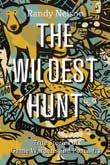ART BERGMANN

TIM GIDAL

TSERING YANGZOM LAMA

The Russian Refugees









Courage Rises




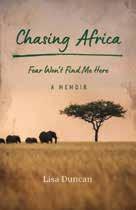


















Shelly Adams Whitewater Cooks Together Again (Sandhill Book Marketing $36.95)
Christian Guay-Poliquin Falling Shadows (Talonbooks $19.95)
Ed Butts
This Game of War (Ronsdale Press $15.95)
Bill Arnott
A Season on Vancouver Island (Rocky Mountain Books $20)
Monique Gray Smith & Gabrielle Grimard I Hope (Orca $21.95)
Marie Annharte Baker Miskwagoode (New Star $16)
Our Long Struggle for Home: The Ipperwash Story (UBC Press $24.95)
Robert Pavlis Plant Science for Gardeners: Essentials for Growing Better Plants (New Society $22.99)
Evelyn Lau Cactus Gardens (Anvil Press $18)
Rescue Me: Behind the Scenes of Search and Rescue (Caitlin $26)
Amplifying Indigenous Voices in Business: Indigenization, Reconciliation, and Entrepreneurship (Self-Counsel Press $26.95)
Ice War Diplomat: Hockey Meets Cold War Politics at the 1972 Summit Series (D&M $26.95)
Grant Lawrence
Return to Solitude: More Desolation Sound Adventures (Harbour $26.95)
In 1994, Caroll Simpson and her husband bought the Ookpik Wilderness Lodge located on Babine Lake in northern BC that could only be reached by floatplane, boat or a long hike. (Ookpik means snowy owl in Inuktitut). They planned to take in their first paying guest in 1997, but her husband died suddenly in 1996. Simpson decided to stay and keep living the dream. It was a physical and mental challenge, and to deal with the loneliness, Simpson kept a journal. The sentence she wrote over and again was “God I love this place!” Simpson tells of her encounters with wildlife such as grizzlies, treacherous weather and threats from local forestry practices over the next two decades while operating her fishing lodge business in Alone in the Great Unknown: One Woman’s Remarkable Adventures in the Northwestern Wilderness (Harbour $26.95). In the process, Simpson became an environmental activistand helped create new parklands and sanctuaries. 9781550179941


oet Cecily Nicholson grew up on a farm.

“My first job was walking in formation, a child field hand,” she writes in her poetry collection Harrowings (Talonbooks $19.95), which combines the beauty of rural life with the pain of being Black in Canada.
Central to her work is the act of exploring, evoking and defining Black diaspora as well as the displacement of Indigenous people (although she does not identify as Indigenous). Nicholson’s poetry lays bare the agony and damage done by supremacy.

She delves deeply into the history of Black people fleeing to Canada to escape slavery and prejudice in the United States, referencing Frederick Douglass, the 19th-century American abolitionist and writer who, in 1854, visited a place called The Elgin Settlement, a planned community for Black fugitives about 50 miles north of Detroit. Douglass described the beauty and good farming qualities of the area. But Nicholson, with the benefit of history’s rear-view mirror, reflects on the “fugitivity of that time, and upon life in the near aftermath of slavery as the dominion of canada [sic] formed. The language and logics of farm stem from structures of settler colonialism even if they embody emancipatory practices. This makes for complicated dreams.”
Nicholson also notices the “sweet-smelling dandelion” and “a butterfly in milkweed.” As well, she writes of working as a volunteer for a food-growing group led by people who were formerly incarcerated. Hope is to be found in surprising places and moving towards, as the book’s blurb says, “abolitionist futures.”
9781772014051
Produced with the sponsorship of Pacific BookWorld News Society.
Publications Mail Registration No. 7800.
BC BookWorld ISSN: 1701-5405
BookWorld
Box 93536, Vancouver, B.C. V6E 4L7
604-736-4011
From Cultivating Kindness by John-Tyler
BinfetElementary student’s drawing showing kindness at school. The student wrote:
You might say that John-Tyler Binfet, a UBC Okanagan prof, has a PhD in kindness. He studies it, having conducted interviews with over 3,000 children and teens about what it means; developed the School Kindness Scale to test students’ perceptions of kindness in schools; and has now written an educator’s guide of the what, how and why of cultivating this prosocial trait, Cultivating Kindness (UTP $34.95). It’s a complicated subject, and there’s different types of kindness. Those who engage in kindness, as well as the recipients, report feeling happier. Binfet’s message to educators is not to wait for “random” acts of kindness; rather foster intentional kindness in the classroom. 9781487525026
“I am helping someone up when they fell.”
 Dominique Rankin • Marie-Josee Tardif
Dominique Rankin • Marie-Josee Tardif
Weaving the Prophecy of the Seven Fires’ teachings with the powerful narrative of his own tumultuous life, Chief Dominique Rankin delivers a vibrant testimony on respect, forgiveness, and healing. In this poignant memoir, the residential school Survivor, Elder, Medicine Man, and former Grand Chief of the Algonquin Nation bares all.
9781989282939 $19.99 pb Vidacom


This First Nation story tells of a young blue jay who finds himself battered and injured in a terrible storm. He seeks help first from the maple, then from the other hardwood trees, but to no avail.

Only the fir tree offers shelter with unexpected consequences for the others.
A lovely story about compassion, helping others and also how some trees came to lose their leaves each Fall. Originally published in French, this is the first English edition.
9781988242477 $19.95 Midtown Press


Here's an empowering Indigenous twist on a classic wolf tale. While picking berries with her mother, a little girl wanders too far into the woods. When she realizes she is lost, she begins to panic. Then a large grey wolf makes an appearance and decides to help her. Through a series of questions from the wolf, the little girl realizes she has the knowledge and skills to navigate herself back to safety. A great book of empowerment and survival that shows children that they too hold such power.

9781926886541 $22.95 hc Theytus Books
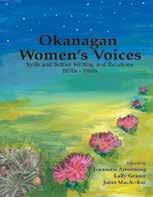
Syilx and Settler Writing and Relations 1870 - 1960s Armstrong, Grauer, MacArthur eds. Featured here are the writing and stories of seven women: Susan Allison, Josephine Shuttleworth, Eliza Jane Swalwell, Marie Houghton Brent, Hester Emily White, Mourning Dove and Isabel Christie MacNaughton.
The book took years of research by editors Jeannette Armstrong, Lally Grauer and Janet MacArthur in order to bring the voices of these women back to life through their own words. It will appeal to anyone interested in Syilx history and the lives of women in early BC history.
9781926886527 $34.95 pb Theytus Books


Sanford presents fresh stories and photographs to give the Kettle Valley Railway its due as a product of a generation of wild west BC adventurers. Here are the stories of Hurricane Hawkins, the engineer whose trains were always perfectly on time, of Minnie Engen who hailed from Minnesota, of Bunkhouse Bill who guarded sleeping engineers in the little town of Brookmere, BC - and stories of many others. BC Bestseller!

The West Coast in the Seventies
Michael Kluckner

9781777876401
9780973560237 $21.95 pb Brookmere Books


In the 1960s and early '70s, thousands of youths were on the road, hitchhiking across Canada, living in rooming houses in cities like Vancouver. Their individual stories played out on a canvas stretched across the frame of world events including Vietnam, Woodstock, Watergate, and the emerging environmental movement, often in a climate of idealism, protest, and anger. This follows several of these young men and women sharing an old home in Vancouver’s Kitsilano district. BC Bestseller! 9781988242460 $19.95 pb Midtown Press
Mimi is a little girl who wants desperately to play hockey like her brothers, but girls in her town don't play hockey, ever. Instead, her Mom puts her into figure skating with white skates and a pink tutu. Will Mimi follow her dreams and become a hockey player? Based on the true and inspiring story of Olympic Gold medalist and Hockey Hall of Famer, Cammi Granato, now the assistant coach of the Canucks hockey team.
9781777481506 $23.99 hc
One Scoop Publishing
In 1970, Phyllis Dyson was an infant when she moved from Ottawa to Burnaby with her brother and single parent mother. Twenty years later, her family made headlines when her mother was shot and killed by a police officer at a Metro Vancouver SkyTrain station. Dyson knew her mother had paranoid schizophrenia, and twenty-five years later, compelled by her young daughter’s questions, she wrote Among Silent Echoes: A Memoir of Trauma and Resilience (Caitlin $24.95) about life with a psychotic parent. Through anecdotes of family life, Dyson recalls happy memories as well as devastating experiences while living with her mother and, later in the BC foster care system. Her social justice story offers a unique perspective as the child of a parent struggling to cope with a psychotic disorder. Now an elementary school teacher, Dyson holds a bachelor of arts in music and a graduate diploma in special education. She is a member of the BC Schizophrenia Society and promotes mental health awareness. 9781773860640

Susan Musgrave lost her husband, Stephen Reid, four years ago when he died of pulmonary edema and third-degree heart block in the hospital at Masset, BC. Tragically, her daughter Sophie Musgrave Reid died three years later at the age of 32 from a drug overdose. Musgrave writes of the impact of these deaths in Exculpatory Lilies (M&S $18.95), her twentieth collection of poetry. There’s more than sorrow in these verses as Musgrave’s “alertness to even the most desolate places, makes her personal sorrows astonishingly potent,” writes her publisher. “Her scrutiny of language, and emotions, makes shot silk out of sack cloth and ashes.” 9780771099007


It’s been almost fifteen years since Dr. Gabor Maté helped us think differently about addiction with In the Realm of Hungry Ghosts: Close Encounters with Addiction (Knopf, 2008). He believes that addiction invariably arises from, or compensates for, emotional traumas. He won the Hubert Evans Non-Fiction Prize for that work. Now, his new title, The Myth of Normal: Trauma, Illness and Healing in a Toxic Culture (Knopf $39.95), which he co-authored with his son Daniel Maté, is already a bestseller.

“That social life bears upon health is not a new discovery, but the recognition of it has never been more urgent,” he says. “Mental health diagnoses are escalating among the young, in adults, and among the elderly. In Canada, depression and anxiety are the fastest-growing diagnoses.... Millions of North American children and youths are being medicated with stimulants, antidepressants, and even anti-psychotic drugs whose long-term effects on the developing brain are yet to be determined.” He says that what we call “normal” is actually a dangerous myth.
“Health and illness are not random biological states in a particular body or body part. They are, in fact, expressions of an entire life, a life that cannot be understood in isolation,” he says and then documents his views about what it is to be healthy— physically and emotionally—and charts a pathway to health and healing.
9780735278363
“This late in our lives, we know enough to be grateful,” writes Evelyn Lau in Cactus Gardens (Anvil $18), her ninth book of poetry. The book is divided into four sections, and part one is a reflection of middle-aged life and enjoying the fruits of one’s work. There are lunches with friends on penthouse terraces with “potted palms, purple mountain range/pleasure boats in the distant harbour.”
There’s also a half life of pain to contend with including an estranged father, friends dying, a pandemic and social distancing, and in the fourth and final part, the story of Lau’s relationship when she was 24 with a much older, famous writer. The writer leaves her to return to his wife and Lau closes with this reflection on herself and the affair: “Twenty years after the desert winter/you are middle-aged, and he is dead.”
9781772141948
Gabor Maté on how society is making us sick and what to do about it.Evelyn Lau Phyllis Dyson
Musgrave on life, marriage, addiction, death and grief. Musgrave on life, marriage, addiction, death and grief.
House B&B.
“The essence of trauma is via disconnection from the self. People disconnect from themselves for all kinds of reasons.”

























There is lifelong value in the Grand Adventure we choose when we’re young as shown in Lisa Duncan ’s memoir. Our travels can be our escape hatches, our tickets to places where we can be whoever we want to be in the company of strangers. Like Duncan, we’ll learn lessons, harsh and hurtful, as well as gloriously life-affirming lessons we have the rest of our lives to comprehend and to write about, if we so choose. If life favours us with good health, we may travel again. We’ll know what to pack and we’ll learn what emotional baggage to leave behind too.
As readers, we can be grateful to have had armchair African adventures along with Duncan’s 24-year-old self in 1996 but also, we’ll have been spared her difficult family history. What are the odds, in a family of six, for one member, the father, being diagnosed with Parkinson’s disease in his late fifties and another, a brother in his early twenties
the pre-Google era and carefully picked her must-see destinations given her time frame, three and a half months, and a backpacker’s budget.
Eventually, two decades later, Duncan penned Chasing Africa: Fear Won’t Find Me Here, a memoir of her African adventure. She writes like a painter and brings her trained eye to every landscape: looking down at the view from her airplane window of the Zambezi River gleaming far below or up at the red dunes of Namibia in the early morning sun. The travel diary she kept brings a charged immediacy to all the sights, smells and sounds as she takes us with her in a cramped Volkswagen with no air conditioning in 40 ˚C heat. Or on the Zambezi River in an inflatable kayak, having water fights with her fellow paddlers while keeping an eye out for lethal hippos and crocodiles. She loves meeting people and exploring the land and water, the spice-scented roads of Zanzibar or swimming across Lake Malawi to another island—and sensibly taking a boat ride back again.
The serendipity of backpacker travel, those magical moments which stay in the mind’s eye forever, are wonderfully presented here. Singing “You Are My Sunshine” and “My Bonnie
learning he has primary progressive multiple sclerosis? There is no known genetic link between these diseases, and the father, an angry man, suffers from depression too. The author’s mother, a Dutch immigrant and briefly a free spirit in her own youth, became a devoted caregiver to both men while in her early sixties.
her newfound passion with her family, considering her brother’s and father’s conditions and her mother’s perpetual caregiver role, and felt guilt in having a strong abled body and an increasingly independent mind.
Othe youngest - born of four siblings , Lisa Duncan knew at an early age that she wanted to travel, so, with her mother’s blessing, she flew to Japan to study the language for a year when she was only seventeen. Upon her return, she worked as a bilingual clerk at Vancouver Airport’s foreign exchange wicket. She also began attending UBC to study art history, which her father, who had been unable to further his own post-secondary education, scoffed at.
Where her life became most sadly conflicted was when she discovered rock climbing. Along with her passion for being outdoors and up high in the mountains came guilt and self-censorship. She could not bear to share
Duncan never stopped thinking about foreign travel. The maternal Dutch side of her family had settled on four different continents, one of which
was Africa. Her long-standing dream of travelling to that continent took hold as a child when she twirled a globe to find her far-flung cousins. She had the confidence to travel solo after after her experience in Japan, and knowing she would meet family members in Johannesburg to begin with, Duncan began saving and preparing for her dream trip. She pored over guide books in
Lies Over the Ocean” to children while waiting hours for a bus to arrive is just one such moment. Yes, of course there are the skilled pickpockets, the romantic infatuations, the dysentery (a guaranteed romance killer), and the frustrations of dealing with bureaucracies, but there is also the sheer happiness of meeting kind and generous locals and fellow travellers.
Even if your own mind and body no longer tolerate overnight twelvehour bus rides or long hikes down unlit roads to find a campground in the pouring rain, you can still enjoy the thrills of intrepid and thoughtful adventurers like Duncan.
Lisa Duncan now lives with her family in Squamish where she hikes, cycles, paddles and writes. She continues to travel widely, often on longdistance bicycle adventures.
9781771605816
Caroline Woodward, author of Light Years: Memoir of a Modern Lighthouse Keeper (Harbour, 2015), hikes, paddles, skis and writes from New Denver, BC.

Independent traveller Lisa Duncan recalls her life-defining trip to Africa at the age of 24.
Lisa Duncan writes like a painter and brings her trained eye to every landscape: looking down at the view from her airplane window of the Zambezi River gleaming far below or up at the red dunes of Namibia in the early morning sun.
Lisa Duncan
A multi-generational story of Tibetan exiles reveals all the things that colonization and history have torn away from them.
The world refugee crisis is almost inescapable. The refugee population is in excess of 80 million, currently worsened by Russia’s attack on Ukraine.
Tsering Yangzom Lama ’s debut novel, We Measure the Earth with Our Bodies , dramatizes the human cost of exile and displacement, based on the case of Tibet.
The Chinese Communist military attack on Tibet, starting in the 1950s, culminated in 1959 when tens of thousands of rebellious Tibetans were killed, and Buddhist monasteries and other cultural treasures were destroyed.
Lama’s fictional saga covers over 50 years in the lives of a Tibetan family subjected to forced exile, deprivation, limited opportunities, aging and death. In 1960, the family from western Tibet flees southward into Nepal to escape danger. From the beginning, it’s a harsh existence. During the journey across the Himalayas, two sisters, Lhamo and Tenkyi, are faced with the demise of their parents by starvation and disease, and the privations of refugee camps.
shares a modest room with Dolma in the Parkdale neighbourhood of Toronto, ends up as a low-paid cleaner.
These bitter but realistic reflections on what’s left of Tibet may leave readers thinking about parallels with the material culture of Indigenous peoples, or murdered European Jews.
The landscape descriptions are sometimes repetitive, and some readers may find the love interest a bit too sentimental for their taste. But the narrative effectively carries readers to a sober conclusion that reinforces the powerful Tibetan attachment to homeland.
vancouver - based tsering yangzom lama was born and raised in Nepal, the child of nomads who left Tibet after the 1959 invasion and settled in refugee camps amid painful memories. She says that We Measure the Earth with Our Bodies is “an act of cultural recovery —of building a bridge to all the things that colonization and history have torn away from me.” Canada, she adds, is home to the second-largest community of Tibetan exiles in the Western world.
 BY GENE HOMEL
BY GENE HOMEL
Dolma encounters the pricy market for museumquality Tibetan antiquities in Toronto. By an astonishing coincidence that some readers may find more mystic than realistic, Dolma discovers the Nameless Saint of her childhood at a party of academics in Toronto, locked in a safe. “And here he is. Our camp’s lost Saint. So humble, so precious,” Dolma thinks to herself. “Looking up with teeth bared, eyes wide, as if struggling to speak … you once sat in the sun of my ancestors’ time.” Dolma purloins the statue, and Tenkyi, her aunt, assumes possession.
Thus does the valued spiritual and cultural legacy remain with Tibetans while in exile.
Death stalks the exiles frequently, but the consolations of their deeply spiritual Tibetan beliefs offer some measure of solace. “In the next life,” one sister muses to herself, “we can both go wherever we please. In the next life, we will be free and safe and happy.” The natural world is a bedrock too, and Lama has lively, lyrical descriptions of the mountains, the clouds, the animal life.
The novel’s title derives from religious prostrations as described by one of the exiles: “… how the pilgrims would stretch their arms forward, mark the earth with their fingers, stand up, walk to that mark, and lie down again.” This exile reflects on their bond with the land: “To measure the earth with my body, to know our country with my own skin.”
The spiritual and mystical assets of Buddhist Tibetans are symbolized by the family’s possession of a small six-hundred-year-old mudstone statue of a “Nameless Saint.” The statue travels with the exiles and provides considerable comfort in tough times, healing powers vital to the sisters and their relatives.
Lhamo’s love liaison with a fellow exile, Samphel, who never knew his mother, produces Dolma, a bright, hard-working young woman who ultimately makes her way to university to pursue Tibetan Studies in Toronto. Tenkyi, a one-time teacher in Nepal who
In one of Lama’s most incisive scenes, Samphel, who had sold the Nameless Saint to dealers, laments, “What I do know is that survival is an ugly game, and our objects are all the world really values of our people. Our objects and our ideas. But not us, and not our lives…. It doesn’t matter to anyone else, not really.” Dolma replies, “People find our culture beautiful. But not our suffering. No one wants to put that in a glass case. Nobody wants to own that.”
By telling the story of a largely invisible people who she asserts “have not yet been heard,” Lama has put Tibetan people, whether in Asia or Canada, on the map. The novel has been shortisted for three prizes (including the Scotiabank Giller Prize) and was a New York Times Summer Reads Pick. 9780771047244
It is January 1945, Katya joins thousands trudging to the Baltic Sea hoping to escape the Red Army.



“Goldstone paints the horrors of war vividly and comprehensively. [Crow Stone is] difficult, harsh, and worthy of attention.” —KIRKUS
“An engaging story from the start.” —BOOKLIST
978-1-55380-665-3 | EBOOK 978-1-55380-666-0 | 260 pp | $18.95




When he is given a “special” poppy, Teddy travels through time to the trenches of WWI, then aboard a ship evading submarines and finally on an air force bomber on a mission. Will Teddy ever get home?
“An imaginative, exciting, yet serious work of fiction.” JOHN ROBERT COLOMBO
978-1-55380-683-7 | EBOOK: 978-1-55380-684-4 | 170 pp | $15.95


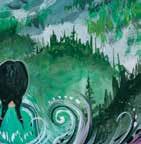















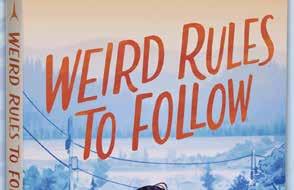
































In 1992, Vancouver’s Yosef Wosk, a rabbi, writer, philanthropist and art collector shared cigars and strong coffee in a Jerusalem apartment with Nachum Tim Gidal, a pioneer of photojournalism. Wosk wanted to purchase one of Gidal’s photographs. Four years later he would become the owner of the largest Gidal collection outside of the Israel Museum.
Born in 1909 in Munich, Nachum Tim Gidal accidently fell into photography as a university student while looking for work. He was introduced to a magazine editor who asked, “Can you take photos?” Gidal said he “supposed so,” to which the editor replied, “Everybody can take photos. But do you have ideas? Can you transmit your impressions visually to me?”
Gidal borrowed his brother’s Leica, first marketed in 1924, which were new portable cameras that would give rise to photojournalism. Thus did Gidal become a professional photographer, capturing images over the First and Second World Wars, the Great Depression of the 1930s, the Holocaust and the establishment of modern Israel. He earned a PhD, immigrated to Palestine in 1936, travelled internationally for magazines like Life, Picture Post and Parade, lived abroad in New York (where he lectured at the New School for Social Research) and produced books with his photos for young people that sold more than 500,000 copies.
He eventually returned to Jerusalem in 1970 and taught at Hebrew University for many years while exhibiting his work internationally in over two dozen shows. He also published more books of his photography (in total, more than thirty volumes). His images include Mahatma Gandhi , Winston Churchill, Carl Jung and Anna Freud, as well as royalty, actors, labourers, political
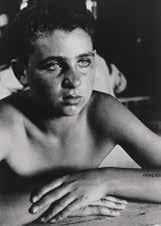
ABOVE PHOTO: Florence, 1934. Gidal commented: “I


streets were empty because Mussolini was giving a speech. I saw this wall with the Musso posters. Suddenly that man came from here, and the other man came from there. They stop, talk, shake hands. Are they friends? Are they anti-Mussolini? I don’t know. I only know they are ignoring Mussolini; they see only each other.”

refugees and people in the street. One of Gidal’s better-known series contains rare images of Polish Jews and their poverty before they were annihilated in the Holocaust.

Gidal was known for his intuitive approach. “I leave it to the object to express itself with the help of my camera, rather than the photographer expressing himself with the help of the lens,” Gidal famously said.
Gidal died on October 4, 1996 but not before he and Yosef Wosk developed a deep friendship, keeping in touch across continents at a time before email had been introduced. “He and I exchanged letters and packages, floated aerograms, couriered special delivery envelopes and had friends drop off items,” writes Wosk in Gidal: The Unusual Friendship of Yosef Wosk and Tim Gidal, Letters and Photos edited by Alan Twigg (D&M $39.95), “We were among the last of the old school correspondents.”
With Gidal, Wosk breathes new life into the work and words of a master photographer who covered pivotal moments in the 20th century. 9781771623025
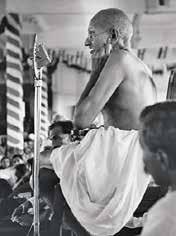
A magazine editor once asked Tim Gidal, “Everybody can take photos. But do you have ideas? Can you transmit your impressions visually to me?”walked through Florence one day in 1934 and the Fiddler and his son, Warsaw, Poland, 1932 Hurdy Gurdy Man and delighted children, Ladbroke Grove, London, 1939 Mahatma Gandhi, All-India Congress, Bombay, 1940 Number 177633: survivor of Dachau concentration camp. The number tattooed on his arm indicates that he had also been a prisoner in Auschwitz. Atlit detention camp, Palestine, 1945 In 1929, Tim Gidal snapped the only photo of Adolf Hitler ever published without his permission. Taking the photo at an open-air café, Gidal risked being brutally mugged by Hitler’s bodyguards for snapping Hitler’s picture. By surreptitiously pressing the camera button as a friend approached, Gidal used the cover of a hand wave and welcoming gesture to hide what he was doing. Fate was on Gidal’s side that day and he wasn’t caught.

After two years of COVID-19 isolation and social distancing, the BC and Yukon Book Prizes held a much-welcomed, in-person gala at the UBC Golf Clubhouse banquet room, September 24 in Vancouver.
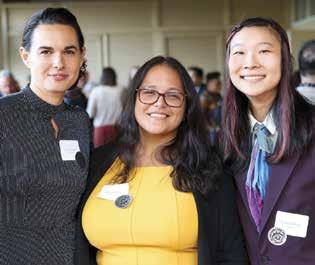
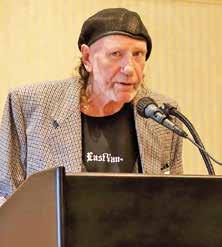
Hosted by spoken word poet Jillian Christmas, the gala’s first award announced was the Jim Deva Prize for Writing that Provokes, which went to immigrant rights activist and author Harsha Walia for Border and Rule: Global Migration, Capitalism, and the Rise of Racist Nationalism (Fernwood). The judges noted that Walia “disrupts easy explanations for the migrant and refugee crises,” showing them to be “the inevitable outcomes of conquest, capitalist globalization, and climate change generating mass dispossession worldwide.” Walia ended her acceptance speech on the hopeful note that she is “looking to build a world that has a home for everyone.”
a few blocks from Oppenheimer Park”
Ozeki wrote. “In 1996, Vancouver rents were still cheap, and for the first time in my life, I had health insurance, which gave me the security and freedom to write. Later we moved to Whaletown, on Cortes Island, a place I love and which inspired subsequent novels, but I’ll never forget that first little house on the alley and how happy I was, living there and learning how to be a writer.”
Ozeki now divides her time among Northampton, Massachusetts; New York, New York; and Cortes Island.
Tara Borin, whose most recent book is the poetry collection, The Pit (Nightwood), earned the Borealis Prize, which recognizes excellence in contributions by the writers, publishers, editors, and literary community builders of Yukon.
Jordan Abel won the Hubert Evans Non-Fiction Prize for NISHGA (M&S). The Roderick Haig-Brown Regional Prize was awarded to Luschiim Arvid Charlie and Nancy J. Turner for Luschiim’s Plants: Traditional Indigenous Foods, Materials and
The surprise of the evening came when street poet Henry Doyle was awarded the Dorothy Livesay Poetry Prize for his collection, No Shelter (Anvil), which covers Doyle’s early years as a runaway from foster homes, an incarcerated youth, and a homeless wage-earner, to a labourer in Vancouver’s construction pools and, finally, stability as a custodian and maintenance man.
Novelist, filmmaker and Zen Buddhist priest, Ruth Ozeki received the 2022 Ethel Wilson Fiction Prize for her fourth novel, The Book of Form and Emptiness (Viking), featuring thirteenyear-old Benny Oh who starts to hear the objects and books in his house talk to him a year after his father dies.
Unable to attend, Ozeki, a Japanese American, sent a note praising Vancouver as the place she wrote her first novel after moving to Canada from New York in 1996 with her husband, Oliver Kellhammer

“We lived in a little house on the alley at 646 1/2 East Cordova Street,
Medicines (Harbour).
Award was presented to Finding the Mother Tree: Discovering the Wisdom of the Forest (Allen Lane) by Susan Simard
To close the evening, the Lieutenant Governor’s Award for Literary Excellence by a BC writer was presented to Audrey Thomas. Since 1967, Thomas has written eighteen books of fiction and more than twenty plays. Often concerned with gender politics, secrets, language and identity, her stories concern the struggles of women, oppressed, or bitter with disappointment, with few happy endings. Thomas is the only writer to have won the Ethel Wilson Prize for Fiction three times.
Booksellers’ Choice
Oat the 19th annual victoria book prize Gala, Esi Edugyan won the City of Victoria Butler Book Prize for Out of the Sun: On Race and Storytelling (House of Anansi), an exploration and meditation on identity, art and belonging. The book offers new perspectives that examine Black histories through the lens of visual art, literature, film and the author’s lived experience. The gala took place at the Union Club, where the prize is awarded to a Greater Victoria author for the best book published in the categories of fiction, non-fiction or poetry.

Wendy Proverbs took home the City of Victoria Children’s Book Prize for her novel Aggie & Mudgy: The Journey of Two Kaska Dene Children (Heritage House). This novel for young readers traces the long and frightening journey of two Kaska Dena sisters as they are taken from their home to attend residential school.
We lived in a little house on the alley at 646 1/2 East Cordova Street, a few blocks from Oppenheimer Park. In 1996, Vancouver rents were still cheap, and for the first time in my life, I had health insurance, which gave me the security and freedom to write.
— RUTH OZEKI, Ethel Wilson Fiction Prize winner
Oat the whistler independent book awards, Rae Knightly received the Children’s prize for her science fiction title Ben Archer and the World Beyond (Selfpublished), which is one of six titles in Knightly’s Alien Skill Series.
“Ben Archer does what any Middle Grade adventure story should do—it hooks the reader in and pulls them along to the end of the book,” said the judges.








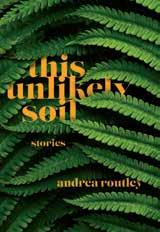


















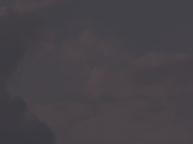





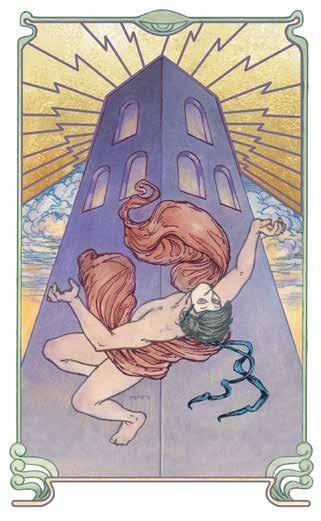
Ameticulously researched biography of one of BC’s most enlightened scholars and museum experts devoted to Northwest Coast Indigenous art, this book is an absolute bull’s-eye achievement.

Working with non-contemporary language and concepts that have since changed, historian Robin Fisher illuminates the depth of Wilson Duff’s contributions to the resurgence of Northwest Coast Indigenous art from 1950 to the mid 1970s. Duff’s lifetime work did no less than provide Canadians unique insights into Northwest Coast Indigenous peoples—even to the extent of changing the practice of Indigenous studies going forward.
Duff was the first anthropologist to be fully employed by the provincial government as its curator of anthropology at the provincial museum in Victoria (from 1950 to 1965). During those 15 years, and later teaching at UBC until his death in 1976, Duff’s career traversed archaeology, ethnography and museum practice. He went straight to the source of his studies through uncountable hours of learning and researching with Indigenous elders and artists, and through decades of field experience studying the structures of Aboriginal cultures and spirituality. Yet he came from an unlikely background for someone now lauded as one of the forebears of BC Indigenous studies.
From a Depression-era workingclass family of Ulster stock in south Vancouver, Duff was an introvert achiever and star athlete at Vancouver Tech before joining the RCAF at 18 in WWII. A navigator on bombing raids against the Japanese over Rangoon and Bangkok, Duff survived with a faith in “chants, incantations, charms,” Robin Fisher comments.

Back home after the war, Duff discovered anthropology at UBC. He also married his high school girlfriend, Marion Barber, and following a master’s degree earned at the University of Washington in Seattle, Duff committed himself, Fisher records, to explaining “the colonial predicament of First Nations peoples in BC to an ever-wider audience.” In a research proposal concerning the Nisga’a and Gitxsan, Duff wrote, “They had never signed a treaty, and so still had legal claims to the
land…The legal issue is not settled.”
As provincial anthropologist, Duff’s reserved personality and listening skills helped when detailing descriptions of daily life and traditions in Indigenous communities. He was keen to acquire knowledge of Aboriginal “social organization, shamanism, the acquisition of [spiritual] power, healing with power, and other concepts of the supernatural.” This approach didn’t always sit comfortably with Duff’s theoryfocused academic colleagues, but Duff carried on.
Visits at Alert Bay led to privileged Indigenous associations with the Dan Cranmer family, including scholardaughter Gloria, and with artist Willie Seaweed and revered pole-carver Mungo Martin. Their tutelage helped Duff produce ground-breaking research in Kwakiutl history and culture that challenged established views. In Victoria, Duff sponsored Martin in building a traditional Kwakiutl house that opened with a three-day potlatch—“the first to be held after the clause banning the ritual was dropped from the Indian Act,” writes Fisher, who asserts later that Duff and Martin “were partners who kept the thread of Northwest Coast art alive when it was very tenuous.”
A retired academic, Fisher provides dense coverage of Duff’s workaholic years at UBC. Although Duff never earned a PhD, he was a magnetic classroom instructor, and at Tom Berger’s recommendation testified as an expert witness in pioneering BC Aboriginal Land Title cases such as the Calder Case and the ensuing Nisga’a land claims.
Importantly, Duff argued for the conservation of old, decaying totem poles from remote coastal sites (for heritage research). With Indigenous elders and artists, notably Bill Reid, and with fellow scholars, he surveyed Haida territory especially. Traditionally, fallen poles decayed and returned to earth, to be replaced by new poles in turn. That replacement no longer happened in Duff’s time. Fisher recounts how many, Bill Reid included, believed the Haida pole-carving art form was already dead.
Tirelessly, Duff consulted First Nations councils in tracking family pole ownerships, asking permissions, and in offering compensation for removal and preservation of selected poles. Duff did things right for that time: Provincial Museum and UBC Museum of Anthropology collections attest we are the richer for his toil.
Later, with some residual guilt Duff conserved further Haida totem poles from Ninstints on Anthony Island. They could now be popularly accessed, a
Duff Wilson (1925–1976) worked to revive BC Indigenous art, eventually bringing a new approach to BC Indigenous studies.
fact acknowledged by Bill Reid, Robert Davidson , Roy Henry Vickers and others who understood the significance of studying these globally important monuments up close.

We learn that emotionally constricted and insecure with acclaim, despite his achievements, Duff suffered from depression. While their teenagers looked on, he and his wife, Marion, drifted apart. As the Sixties moved on, Duff moved out. Social behaviours shifted, and Duff had affairs that included students. An insightful poet, he read works from the Human Potential Movement of the period that often paralleled with explorations into psychedelics. Duff’s interpretive interest in the consciousness—which he believed underpinned much of the work by Northwest Coast artists that he admired, the Edenshaws of Haida territory foremost—increased exponentially.
Fisher writes with impressive clarity on the two powerhouse exhibitions of Northwest Coast Indigenous art that cemented Duff’s pre-eminence in evaluating how we now regard this work as fine art, not simply as cultural
“artefacts.” Exhibition catalogues such as images stone b.c. for the show at the Provincial Museum (1975) and Arts of the Raven at the Vancouver Art Gallery (1967) were praised internationally. Wilson collaborated with Hilary Stewart and Richard Simmins on the former, and Bill Reid and Bill Holm on ‘Raven.’
But as his personal anxieties increased, and his idiosyncratic concepts of reincarnation and sexuality in Indigenous art became entangled, Duff’s writing powers began failing. Academic views of his ideas dimmed; former students forged careers around him.
Fisher sensitively handles Duff’s suicide in 1976. This edition consolidates knowledge of a complex figure central to our evolving understanding of Northwest Coast Indigenous art, and Fisher concludes appropriately in quoting Duff’s long-time friend Roy Henry Vickers: “You know, you will figure out a lot about Wilson, but you will not figure it all out.” 9781550179750
Trevor Carolan’s most recent book is Road Trips: Journeys in the Unspoiled World (Mother Tongue, 2020).
The mystical extent to which Wilson Duff devoted himself to his work is legendary among those who knew him. Following his preparation of the 191-page Arts of the Raven catalogue for a Vancouver Art Gallery exhibit in 1967, Wilson became obsessed with the notion of bringing together the only two stone masks known to exist from the Northwest Coast: one Tsimshian mask with closed eyes was kept in Ottawa, and the other with open eyes was kept in Paris.
In 1975, Duff and art gallery director Richard Simmins succeeded in obtaining permission from France to transport their priceless mask to British Columbia. Duff retrieved the twin mask from the Musée de l’Homme for a one-year period, bringing it to his home in Vancouver; Hilary Stewart transported the mask from Vancouver to the Victoria Art Gallery, where it was reunited with the mask from Ottawa. “The sightless mask was lifted carefully and placed over the face of its seeing twin,” Stewart recalled. “...the two nested together in a close, snug fit. It was a deeply moving moment as the two masks came together again for the first time in a hundred years or more.”
The mask from Ottawa had been collected by I.W. Powell at the Tsimshian village of Kitkatla in 1879; the ‘open-eye’ mask was donated to the French Museum of Man by Alphone Pinart, said to have been collected at Metlakatla or on the Nass River. After consulting with Musqueam Della Kew, Duff ensured the twin stone masks were henceforth stored together—one cradled by the other, each an equal part of a whole. He later wrote, “Life is a pair of twin stone masks which are the very same but have opposite eyes.” The masks represented the “living paradoxes in myth and life” that Duff believed were near the source of Northwest Coast Aboriginal art.
— Excerpt from ABCBookWorld.com author entry for Wilson Duff.
- Available exclusively at Chapters/Indigo$26.95 | Paperback | 176 pgs | Download Kit
The world as we know it has changed. If your business needs more employees but you don’t have the office space to accommodate them; if someone on your staff wants to work from home; you want to promote a flexible work environment but fear losing profits; or you simply need to adapt due to a pandemic as so many have had to do, Managing Remote Staff may be the answer.
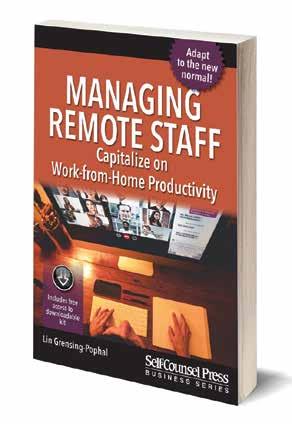
$26.95 | Paperback | 162 pgs | Download Kit

Ecologist Don Gayton of Summerland meanders (in a seemingly effortless way) from animals and scenery to etymology, poetry, wine, recipes, history, memoir, geography, and back to animals in one story. Yet it all holds together as evidenced in his latest collection of essays, The Sky and the Patio: An Ecology of Home. Here is an excerpt from the essay that gives the book its title, which tells of a spring dinner hosted on the family balcony and feeling close to nature.—Ed.
Oevening clouds move like an immense , quiet army, all dressed in purple and gold. They march steadily northward over the top of nearby Conkle Mountain. It is April, and I am consummating my first outdoor patio supper of the year, under this referential sky. It is a full auditory evening: hungry coyote pups yip from somewhere on Conkle, as they anxiously await mother’s return from her hunt. Neighbourhood dogs respond in kind. Then cheers go up for a home run at our small town’s softball field. Pacific tree frogs in a slough nearby add their separate chorus. Earlier in the day I heard the season’s first sandhill cranes: har -


bingers of oncoming spring. These great birds are heard long before they are seen, on their migratory journey from Texas to Alaska. Yard work comes to a halt while you (literally) crane your neck to look for them. Sandhills are always far higher in the sky than first assumed. Sometimes you don’t see them at all because they are flying above the clouds. But they do return, every April, and I am humbled by that.
I am confident the natural forces that govern the lives of sandhill cranes, coyotes and tree frogs also compelled me onto our patio this first spring night....
…The word patio is nominally from the Spanish language, but the word’s linguistic roots go far back into Old Provençal and Latin, signifying variously ‘a communal pasture,’ ‘a covenant,’ or ‘to lie open.’ The Arabic equivalent is the enclosed courtyard or fana’, and
the patio concept appears in many other building styles and cultures. Our patio functions as a human communal pasture when we gather there with friends to enjoy food, wine and conversation. The long Covid shutdown reminded us just how life-sustaining that companionship is.
A patio is a refuge, but one that is exposed and slightly daring. Perhaps it is a tacit acknowledgment that we humans have spent more evolutionary time outside than inside. To my mind, the Argentine poet Jorge Luis Borges (1899–1986) captured the patio’s fundamental essence when he wrote:
“El patio es el declive por el cual se derrama el cielo en la casa.
“The patio is the channel down which the sky flows into the house.”
9781554201945


It’s 1964. The groundbreaking guidebook Europe on Five Dollars a Day by Arthur Frommer has only been on the market for seven years. Independent travel is just coming into its own, and most Canadian travellers still take guided tours when venturing overseas. But in a growing rite of passage for youth, 19-year-old Jim Kerr and his 18-year-old friend Blair Campbell leave Kelowna with nothing more than two canvas knapsacks and intentions to spend several months travelling through Europe. The audacious part of their plan is to outdo Frommer and make the trip on $2 a day.
Over the past year they had become accomplished hitchhikers, a popular mode of free travel back then. Being young, they were willing to sleep in cheap digs like hostels and sleazy
hotels and occasionally for free on the roadside. Also, in the months leading up to their departure, they fostered a number of pen pals in various countries that they could drop in on for free accommodation—as well as distant relatives they had not previously met. Their adventure lasted from June
26, 1964 to March 17, 1965. They took odd jobs along the way to earn a little extra cash; bought and sold an old Saab, making a tidy $50 profit; and even sold their blood in Beirut and Athens. They also hawked two stolen blankets for $3. Unethical at times, certainly, but usually the two depended on their resourcefulness and wit, as related by Kerr in his memoir, Meet Me in Cairo

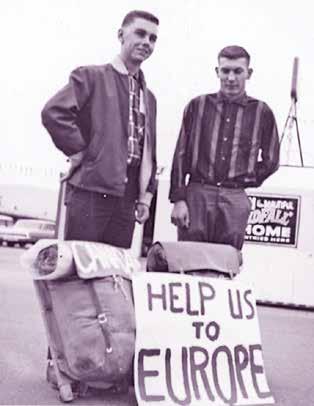
Heading to the south of France in the fall to escape the cold, Kerr and Campbell stopped over in Paris. “We soon discovered that Paris was not a place for those with little money,” Kerr writes. “We saw the sights and nursed an espresso in a café for hours, poring over a copy of the International Herald Tribune I found on an empty table.”
It was a different world then, such as the differences Kerr witnesses between East and West Germany before reunification. “West Berlin was an economic miracle, considering the devastation it saw in the war, with bright lights, nightclubs and a high standard of living,” writes Kerr. “East Berlin was grey-toned, with few lights, bleak and boring. It looked like a prison, a collective punishment by the Soviet Union for war crimes committed by the Third Reich on the Eastern Front. No one we met smiled, almost as if smiles were forbidden.”
After Paris, the two found paradise in Nice. It was warm, the wine—in five-litre jugs—was cheap and, coupled with delicious bread and cheese, made for relaxing afternoons. The larger evening meals were often “salade niçoise and then plates and plates of fish with hot, salted French fries,” recalls Kerr. While hitching in Spain, Kerr and Campbell hear stories about how cheap and entertaining Morocco is and make a detour through North Africa enroute to Athens. Luckily, they were road savvy when they arrived in Tangier, which was “the craziest place that Blair and I had ever been,” writes Kerr. “All of our survival experience gained over the last months of hitching was put to the test.” Through their own naïveté, however, they almost get thrown in jail in Marrakesh, but an understanding policeman lets them off with a warning. After travelling through Algeria and Tunisia on their way to Egypt, the two travellers finally have their first big argument and almost part ways. As Campbell starts heading back to Tunisia, Kerr yells back at him, “Meet me in Cairo.”
Fortune on their side, the two reunite and head across the Middle East and Greece before flying back to New York. They hitchhike home to Kelowna. Kerr arrives back with just forty-five cents. But the treasure trove of stories he gained have lasted a lifetime.
9781989467527
Sixty years ago, two teens devised a plan to travel Europe on $2 a day.Meet Me in Cairo:
What do the words “wild,” “wildness,” and “wilderness” mean to you?
To most, images of primitive and undeveloped nature come to mind; to others, romantic scenes of places untouched and unspoiled by humans.
Frequently humans are somehow seen as an entity separate and apart from wilderness or what we call Nature. It is all too often viewed in an “us” versus “them” split.

It’s curious that such viewpoints still dominate: after all, the idea that humans are part of Nature isn’t new. Fifty years ago, the Gaia hypothesis, named after the ancient Greek goddess of Earth, posited that Earth and its biological systems function as one huge single entity. This entity has closely controlled, self-regulatory feedback loops that keep conditions on the planet within boundaries favourable to life. Introduced in the early 1970s, the theory was conceived by chemist and inventor James E. Lovelock, who recently passed away at the age of 102. So why the enduring split? Gab-
riola Island–based ethnographers and filmmakers Phillip and April Vannini set out with their preteen daughter, Autumn, on a five-year series of world trips to explore just what the terms meant to people of other cultures. Well-selected destinations, including the Galápagos Islands to Tasmania and Iceland were on the itinerary. After several hundred interviews with people from all walks of life, they came away
with an understanding of wildness in a new light. In their book, In the Name of the Wild, they recorded many dramatically different perspectives, other than the usual “something remote and untouched.”
The Vanninis’ findings are surprising and thought-provoking. “The idea of wildness differs from person to person,” they write. “What a wilderness is to you is not the same as what it is to us. And
what it means to us differs dramatically from what it means to a polar explorer or the average city dweller.” In New Zealand, for example, “A volcano might seem wild to a visitor, but to a Māori, it is an ancestor, it is family.”
Closer to home, Mary-Jane Johnson, heritage manager for the Kluane First Nation in Yukon Territory, said, “When you say ‘wilderness’, why are we excluded from that idea of wilderness? People are part of the wilderness; people are part of the land. My body does not survive day to day without being part of that land or without being part of that water…Why are we putting ourselves outside of the idea of wilderness?”
And speaking of family, there’s a young reader’s viewpoint throughout the book too. When asked what “wild” meant to her, daughter Autumn’s answer came to her while hiking New Zealand’s Hollyford Track: “Alone with the forest.”
In fact, this entertaining and educational book takes along not only the family but readers too: you go travelling with the authors and share their scenery and experiences, including their trepid moments. You can enjoy the journey, ponder and philosophize, and then decide what your answer might be.

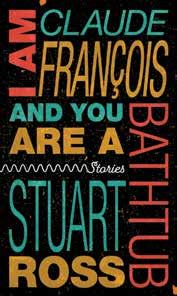
9780774890403
Freelance writer Graham Chandler has visited 50 countries and has over 800 magazine articles to his credit. He lives in the wilderness of Vancouver’s West End.


A family discovers that ‘wildness’ means many different things to different people.
After much diligent sleuthing, UBC professor emeritus Alexander Globe found the only known diaries of some of the early gold miners who came to BC in 1858 to seek their fortunes along the Fraser River.
Through the words of these entrepreneurial miners, Globe becomes a witness to their hardships and dreams of glory, as he details in Gold, Grit, Guns: Miners on BC’s Fraser River in 1858. Globe excels in describing the mechanics of the life of a miner, including the cost of food, travel, supplies and living quarters. The book also includes copious maps and rarely seen images of life on the Fraser during these times.
Mining culture in the 19th century was deleterious to the lives of Indigenous people, and Globe chronicles that grim reality too. He also tells of the devastating effects of the gold rush on the landscape and the salmon run.
BC BookWorld caught up with Alexander Globe to talk about his research methods and the lives of these adventurers.
OBC BookWorld: How did you discover the diaries?
Alexander Globe: I’m a compulsive researcher. For two months, I searched the archives and libraries of many west coast institutions, plus important eastern repositories such as Library and Archives Canada, the US National Archives and Yale University. When I found a promising listing, I visited the institution personally. Dozens of times I discovered that the item was not a diary and not written in 1858. Only four diaries written on the Fraser River in 1858 were found.
BCBW: What drew people to the Fraser in 1858?
AG: At that time, the average North American worker earned a dollar a day with no hope of social or economic advancement. Lucky Fraser River miners reported daily finds of over $50 a day. Suddenly a house and family or business opportunities were within reach. Those dreams drew 33,000 people to the Fraser River in 1858. Most came from California, which was experiencing an economic slump. The problem is that gold is rare, even in good locations. To produce the gold for one ring, 2.8 tons of debris are typically discarded. Many miners did not even cover their expenses.
BCBW: Before a road was built, how did miners get up the Fraser to find gold?
AG: After June of 1858, there were regular steamers from Victoria up the Fraser River to Hope. They cost as
much as a fare from San Francisco though. Many prospectors preferred to paddle up the Fraser in canoes. Between Hope and Yale, everybody took canoes they owned or which were paddled by Indigenous guides. The trails along the Fraser Canyon beyond Yale were so dangerous that only a few thousand of the 33,000 arrivals ventured there.
BCBW: How difficult was it to build the Lillooet Harrison Trail?
AG: Governor James Douglas had a great deal of experience working in the wilderness, so he thought that 500 road cutters would be able to complete around 70 miles of roads reasonably quickly. However, the poor people skills of some supervisors led to contradictory orders and poor morale. There were supply chain issues feeding 500 people, particularly since gouging prices made it impossible to purchase the number of mules needed for transport. Many
Sluices up to several hundred metres long featured complex sieves and required a constant flow of water (ideally 8,000 litres per minute) from high elevations. The pressure created from the water flow separated gold from rocks and sediment, but the sluices damaged terrain. From The Miners’ Own Book,1858.

road grades were too steep and bridges were not built above normal spring water levels. The road from Harrison Lake started on August 8, 1858, and reached Anderson Lake at the start of October. Remedying the defects took years. But the lessons learned made the planning and building of the Cariboo Road much more successful.
BCBW: The common view is that miners panned for gold in a river, but did they use other methods to find gold?

AG: In 1858, all the mines were surface affairs on the gravel bars along the Fraser River. Pans were used to find promising locations. Then large rocks were thrown aside and digging began up to three metres deep. Smaller stones and clay were shaken away through sieves in what they called a “rocker.” The heavy gold washed into the bottom. Later, aggressive sluicing started. But underground mining of quartz veins took place later in the Cariboo.
BCBW: What was the fate of the four miners whose diaries you found?
AG: One, a California miner, spent all of his $200 savings getting to the Fraser and left destitute. He wound up as a mining broker in San Francisco and died in 1890, at the then advanced age of 59. Another resident of Whidbey Island, earned around $1,000 between August 11 and November 12, then built a house for his bride back in Washington. He succumbed to tuberculosis in 1866, aged only 34 years. A third, an Upper Canadian who succeeded in California, also earned around $1,000 between August 10 and October 12. He drowned later in the Cariboo, probably before his 30th year. The fourth diarist became a successful merchant and riverboat operator after 1858. He drowned in a shipwreck during 1875, aged 44.
Newly discovered diaries reveal the brutal lives of miners during the 19th-century Fraser River gold rush.Gold, Grit, Guns: Miners on BC’s Fraser River in 1858 by Alexander Globe (Ronsdale Press $26.95)
One of Canada’s greatest mysteries—on a par, perhaps, with the Oak Island money pit or why anyone would willingly eat at Tim Hortons—is that singer, songwriter, and guitarist Art Bergmann has never been granted a level of public acceptance commensurate with his raw talent.

It is an unanswerable question, but music journalist Jason Schneider has made a game try at parsing Bergmann’s early and middle years, beginning with his formative experiences in the Fraser Valley, highlighting his emergence in the uniquely isolated and tight-knit Vancouver punk scene of the late 1970s, and moving on to his ultimately ill-fated time in our country’s showbiz capital, Toronto.


There are gaps in the chronology. Most notably, Schneider sprints through The Longest Suicide’s final chapters, somewhat shortchanging Bergmann’s self-imposed exile in Alberta and his unanticipated return to form, in his 60s, with three potent and powerful albums of emotionally invigorated social commentary, Songs for the Underclass The Apostate, and Late Stage Empire Dementia
and the contents of this uniquely well-read songwriter’s bookshelves likely hold more human interest than this over-familiar story of Canadian corporate myopia. Nor is there any serious discussion of Bergmann’s turn towards anti-colonial and anti-capitalist thought in his recent work. What led him away from bitter selfanalysis and towards chronicling the sad death of an Indigenous residential school escapee (“The Legend of Bobby Bird”), the malignant power of the Christian right (“Christo-Fascists”), and the excesses of American imperialism (“La Mort de l’Ancien Regime”)?
Regrettably, Schneider has also failed to interview many of Bergmann’s latter-day collaborators. It would have been valuable, for instance, to have heard from Neko Case co-writer Paul Rigby and Jann Arden bandleader Russell Broom, whose creative guitars and clear-eyed production input have greatly amplified the songwriter’s innate power.

The lasting impression from The Longest Suicide is that Bergmann’s life and career are winding down. If true, this would be understandable, but it’s too early to make that call. Far from being “a never-was trying to be a has-been,” as he memorably described himself in 1990’s “Bound for Vegas,” Bergmann has recently done some of his best work and has even been rewarded for it. In 2020 he was inducted into the Order of Canada. Who would have seen that coming?
My bet is that the old guy still has some life left in him, and that there’s room for a more comprehensive Bergmann bio on any music-lover’s shelves. 9781772141962
Also regrettable is that title. No doubt Anvil Press felt it appropriate, given that illness, injury and addiction had brought Bergmann to death’s door more times than even the hardiest feline. But The Longest Suicide was announced at roughly the same time that the musician’s wife, muse, and de facto manager, Sherri Decembrini, died in the couple’s home as the result of a fall. Bergmann’s friends effectively mounted a suicide watch following the March 20, 2022 accident, knowing how devastated he would be; for many, the book’s name seemed in the worst possible taste.
According to reports from a recent memorial for Decembrini, Bergmann is bearing up surprisingly well, but the astonishingly intimate song and music video he recently dedicated to his late partner, “Death of a Siren,” finds the singer breaking into tears at his kitchen table as he remembers their union. Frankly, it left me a little teary as well.
While The Longest Suicide isn’t entirely the book Bergmann’s admirers wanted to see, it is better than expected. Much better. Drawing heavily on Bergmann’s friend and occasional bandmate John Auber Armstrong’s memoir Guilty of Everything (New Star, 2001)—itself enjoying an expanded and updated reissue this fall—Schneider does a fine job of conveying the peculiar mix of post-hippie debauchery and prepunk abandon that Bergmann grew up within.
(He does, however, bungle some of the finer points of Vancouver cultural trivia—calling the apolitical hooligans of Vancouver’s Clark Park Gang “revolutionaries,” and labelling radio-rockers Prism “prog.”)
A senior West Coast arts journalist living on unceded Snuneymuxw territory, Alexander Varty has also played guitar with Art Bergmann in two separate bands: Chris Houston’s Evil Twang, circa 1991, and the 2014 edition of the songwriter’s own ensemble.
Where Schneider’s biography shines—and this is not surprising, given his co-authorship of Have Not Been the Same (ECW, 2001) a survey of alternative rock in Canada, and his Whispering Pines: The Northern Roots of American Music from Hank Snow to the Band (ECW, 2009), a review of Canadian contributions to the “Americana” genre—is in its coverage of Bergmann’s middle years. Conducting a near-mythic and decidedly Sisyphean struggle against record-company indifference, ill-conceived production strategies, and his own bad decisions, Bergmann created an indelible body of work and established himself as a Canadian counterpart to Lou Reed or David Bowie. This is not hyperbole: his songwriting holds up, even if comparable fame didn’t follow.
Schneider could have spent more time exploring Bergmann’s lyrics, although his succinct origin stories for some of Bergmann’s most memorable songs are valuable. Retitle his book Art Bergmann Versus the Showbiz Weasels, or something like it, and I’d have few complaints.
But Bergmann’s years of exile in Alberta, his successful battle to rekindle his creativity despite crippling osteoarthritis, his literary influences
Despite struggling against a music business that largely ignored him, Art Bergmann created an indelible body of work and established himself as a Canadian counterpart to Lou Reed or David Bowie.





Competition or cooperation—which produces greater social justice?
One of BC’s leading proponents of co-operatives, John Restakis, lays out the arguments for co-operation. His first book, Humanizing the Economy: Co-operatives in the Age of Capital (New Society, 2010), showed how co-operatives can create a more equitable, just and humane future. Having been active in the coop movement for 25 years, including as executive director of the BC Cooperative Association, he has visited and studied co-ops around the world.
Restakis has extended his ideas to the realm of politics in Civilizing the State: Reclaiming Politics for the Common Good. It comes at a crucial time as political violence and mayhem in the US capitol on January 6, 2021, threatened American democracy. Restakis doesn’t shy away from the difficult, confusing aspects of this histori-
cal moment; that millions of Americans see themselves, like the violent rioters do, as patriots and not as appallingly dangerous people. Such distortions have been coming to a head for decades, says Restakis, as people have been left out of real decision-making when democracies became highjacked by elites and large corporations. “In the U.S., far from rejecting the rising tide of fascism, the 2020 elections revealed a divided nation in which Donald Trump exerts a satanic spell on half the voting populations,” writes Restakis.
He highlights other examples of farright, fascist-leaning governments that are being embraced by frustrated electorates in South America, Europe, the Middle East, and India, and the social and environmental devastation that follows in their wake. The gap between the rich and the poor is growing, and the climate crisis keeps getting worse.
Restakis’ conclusion: existing political systems of so-called liberal states are failing to deal with contemporary crises of inequality, injustice and ecological collapse. Looking for solutions around the world, Restakis explores small experiments in better ways of governing. He quotes the Nobel-winning chemist Ilya Prigogine, who said, “When a system is far from equilibrium,
small islands of coherence in a sea of chaos have the capacity to lift the entire system to a higher order.”
Restakis finds these small islands of coherence in places like Barcelona, Spain, where the innovative En Comu party was elected in 2015. Relying on numerous citizen assemblies that worked for the common good, En Comu built a strong culture of participatory democracy. With the use of technology, “there were more than 80 citizen
assemblies and over 8,000 citizen proposals for improving the quality of the city. Over 70 percent of these proposals were accepted,” writes Restakis, adding that the key is political commitment to authentic participation. He calls this process “deepening democracy.”
In the State of Kerala, India, deep democracy got a boost in 1957 when the Communist Party of India was carried to power. Rather than implementing the traditional approach of the state being placed in the hands of the Party and decisions emanating from the centre, it went the opposite way: decision-making was placed in the hands of the citizens through citizen assemblies. “This required not only radical changes in how the institutions of government operated but also changes in how people behaved,” writes Restakis. “Success depended on addressing two issues … raising awareness and proper preparation. To this end, a massive training program was launched.” Over two million people took part in these early citizen assemblies in Kerala, which led to land reform in the state. “In 1959, one-third of the rural households had no land; by the 1980s, 92.2 percent of rural labor households owned land,” says Restakis. The overall result is that Kerala has India’s highest standards in health, literacy, women’s rights, infant survival, equality and life expectancy.
Restakis’ final chapter is about getting rid of the so-called welfare state and replacing it with what he calls the “partner state”: reclaiming true democracy and shaping a better future for the common good.
“Set against the great weight of hierarchy and elite rule that marks the vast bulk of human experience— past and present—politics is a revolt against the gods of entrenched power and privilege,” he says, adding that the political ideas he has presented will “tame power and make it the currency of our collective life—not merely the plaything of privilege.” 9780865719439
by Lucia Frangione
Graziana’s life has been overturned. With no stable ground to stand on, she returns to the land of her ancestors in search of healing. In Graziana’s absence, her stepfather Herman has been saddled with Hazel, his wilful, creative, and thoroughly neglected granddaughter.
From the sun-smothered cammini of Italy to the inhospitable schoolyards of Canada, Grazie is a story of reclamation, rehabilitation, and forgiveness.

978-1-77201-508-9; $19.95; Fiction
Forthcoming February 15, 2023
by Martine Desjardins translated by Oana Avasilichioaei “Medusa is like a poison you ask for.” Ariane Gélinas, Les Libraires
“Terrifying … a powerful indictment of patriarchal power” Manon Dumais, Le Devoir 978-1-77201-385-6; $19.95; Fiction Now Available


This new series of prose and poems, anchored by woodcuts by the author, explores extinctions, species interdependence, environmental justice, soul loss in modernity, the natural and Supernatural worlds, and animal rights and power, always keeping peace and love for Mother Earth in view.
978-1-77201-439-6; $19.95; Poetry Now Available
 by Edward Byrne
by Edward Byrne
The poems in Tracery enact a lyric condensation. Often written in transit: on the bus, on a bicycle, on foot, in the endless to and fro of work life – they are primarily governed by the music of reason: “the ear’s judgement” (Joachim du Bellay), the “natural music” of poetry (Eustache Deschamps), “music at the heart of thinking” (Fred Wah).
978-1-77201-435-8; $16.95; Poetry Now Available

Building democracies with co-operative movements gets better results.Civilizing the State: Reclaiming Politics for the Common Good by John Restakis (New Society $19.99)
At the age of ten, Hazel Wilson (1941–2016) was playing on a beach with her cousins, when she was approached by Haida elders, including her mother and aunts, who informed Wilson her destiny was to create button blankets.
“They took me to the house and showed me blankets with shells and handmade beads and they told me that’s what I would be making … I felt like I was floating. To be called like that—it was the greatest day of my life,” Wilson told gallerists and journalists in her later years, as noted in Glory and Exile: Haida History Robes of Jut-ke-Nay Hazel Wilson
The elders’ pronouncement came with great responsibilities, and Wilson dedicated her life to fulfilling her community’s wishes by maintaining the oral histories and social values she had learned as a child in Haida Gwaii.
Wilson’s traditional Haida name was Jut-keNay, and within her matriarchal society, she was Haida royalty, says her daughter Dana Simeon. “My Mama was a Knowledge Keeper,” she writes in her touching recollection. “She was matriarch of the house of Sgaann 7iw7waans of St’Langng7laanaas.”
In the beginning, Wilson created pieces such as vests, jackets, dance aprons and robes specifically for her family as gifts. “Hazel’s apprenticeship was not an easy one,” writes art critic Robin Laurence in her elegant biographical essay of Wilson. “Commitment was total; teachings, both oral and through demonstration, were stern; and she often sat inside working while her friends and cousins played or learned other skills.”
Although a post-contact item, button blankets feature clan or family crests (usually worn as feast attire) and therefore are important for asserting the wearer’s hereditary rights and places in their communities. Hazel’s family crest was a killer whale, and it appears in many of her button blankets.

Oin 1960, at the age of nineteen, hazel wilson married and within thirteen years she had eleven children. In the early 70s, she moved to the Vancouver area to get away from her abusive husband. As a single mother Wilson continued to make blankets and ceremonial regalia for family members, but additionally, she began to supplement her income by selling button blankets to non-Indigenous buyers. She also organized re-enactments of Haida legends with her children at the Pacific National Exhibition (PNE) in Vancouver. At Expo 86, Wilson recreated Potlatch ceremonies for thousands of visitors. She also took her children back to Haida Gwaii to attend formal Potlatches. Moreover, Wilson attended powwows of Indigenous peoples across North America. “We started travelling because we were interested in native culture, and curious about Prairie Indians and the way they were,” Wilson said. “We brought our stuff to wear, showed them what we had, and we were accepted as their people.”
These cross-country trips were subsidized by Wilson’s button blanket sales, which she described as “travelling on ‘blanket power.’”
In 1986, Hazel participated in the UBC Museum of Anthropology show Robes of Power: Totem Poles on Cloth, the first exhibition to highlight button blankets and their place in Northwest Coast Indigenous culture. At this time, most blankets were designed by men and sewn by women. Wilson’s pieces were significant because she did both.
Oduring the last decade and a half of her life, hazel Wilson’s artistry took another direction. Laurence writes that Wilson’s work evolved from longstand-
ing Haida designs to images of both historical and contemporary events and “revealed the influences of folk art and popular culture on Hazel’s imagery.” Wilson started using unexpected materials, including sequins, crystals and precious objects such as Métis beadwork. She also incorporated patterned fabric and acrylic paints.

It was to bring Hazel Wilson to wide popular and critical attention. In 1997, when news broke that a 300-year-old rare Golden Spruce tree, revered by the Haida, had been chopped down by a non-Indigenous logger in an act interpreted as eco-terrorism, Wilson was moved to tell the traditional Haida story of the sacred tree, which they called K’iid K’iyaas. She created seventeen narrative robes that were collectively called The Story of K’iid K’iyaas. This new work drew comparisons to other worldwide symbols such as the Tree of Life, and Mexican folk art and outsider art.
By now, Wilson was 64 years old and about to begin what would be the grand finale of her life, The History Series. It is this achievement that takes up more than half of Glory and Exile, for it is Wilson’s largest and arguably most important work. According to the book, Wilson always saw these 51 robes as public art to be widely seen and understood.
Robert Kardosh of Marion Scott Gallery, Wilson’s gallerist, documents the robes with many coloured panels of this series and texts about each robe written by Wilson herself. This coffee table–style book, with a foreword by Haida artist Jisgang Nika Collison and an afterword by Wilson’s youngest brother, Chief Sgaann 7iw7waans, Allan Wilson, is a fitting tribute to the unique and breathtaking art of a woman who, in Robert Kardosh’s words, “fought to maintain Haida identity and values in the face of an assault on their traditions, lands, and ways of being.” 9781773271170
Haida artist Hazel Wilson dedicated her life to making button blankets, reaching a zenith with “The History Series,” comprised of 51 robes depicting Haida origin stories.Beverly Cramp is the publisher of BC BookWorld. Glory and Exile: Haida History Robes of Jut-ke-Nay Hazel Wilson with essays and recollections by Robert Kardosh, Robin Laurence and Kün Jaad Dana Simeon (Figure 1 $50)

Hermit Hill by Mike Deas and Nancy Deas (Orca $14.95) takes the reader (ages 6–8 years) to a small village with legendary moon creatures. Four friends are building a go-kart for the annual Fall Fair competition. But when one of the friends, Sleeves, secretly stumbles upon the moon creatures, he locks them up. A race against time leads the friends to undo Sleeves’ actions and save the village. 9781459831490
OIn Kwändür (Conundrum $25), Cole Pauls celebrates the cultural practices and experiences of Dene and Arctic peoples. In this very personal work, we not only learn about Pauls’ family, racism and identity, and Yukon history but also learn how to Knuckle Hop, acknowledge and respect the Indigenous land we’re on, and be an ally to Indigenous people. 9781772620771
OOur Little Secret by Gabriola Island’s Emily Carrington (D&Q $34.95) introduces the reader to Emily, an artistic teenager living in harsh conditions in the Maritimes. A neighbour offers help and the words “our little secret.” Twentyfive years later, Emily spots her neighbour again on a ferry, and she vows to bring him to justice, tell her secret, and conquer the wounds that have defined and depressed her life.
9781770465466
Karen Shangguan’s Quiet Thoughts (Avery Hill $22.50) captures moments and sensations from the natural world to the fragility of human interactions. A lyrical narrative that contemplates what it means to be alive.

O9781910395608
OJohnnie Christmas creates his first middle-grade graphic novel with Swim Team (Harper Collins $15.99), which follows Bree at her new school, where she is stuck with an elective she never wanted: the dreaded Swim 101. Bree must face her fear of swimming with the help of an elderly swim team captain. Johnnie Christmas is best known for co-creating the series Angel Catbird with Margaret Atwood and adapting William Gibson’s lost screenplay for Alien 3 into a graphic novel.
9780063056763

OTwelve-year-old Victoria is burnt-out from the high pressure of highstakes horse riding in Ride On by Faith Erin Hicks (First Second $22.99). She withdraws to the simple joys of riding for pleasure and the love of horses. But can she survive without friends? Suitable for ages 10–14. Faith Erin Hicks lives in Vancouver, and is noted for creating The New York Times bestselling Pumpkinheads (with Rainbow Rowell). 9781250772824
OUnder the Banner of King Death: Pirates of the Atlantic, A Graphic Novel (Beacon Press $17.95) is an exhilarating tale of rebellion in the 18th century, as common sailors overthrow their oppressors and create, against all odds, a democratic and egalitarian social order—if only for a short time. The book was drawn and co-written by David Lester and historian Marcus Rediker 9780807023983
Rave by Jessica Campbell (D&Q $27.95) is a queer coming-of-age story that follows 15-year-old Lauren, who is shy, ashamed of her body, and a devout member of an evangelical church.
9781770464605
OYellowknife‘s Jay Bulkeart, a filmmaker, Erika Nyyssonen, a playwright, and Lucas Green, a Vancouver illustrator, joined together to create King Warrior (Renegade $19.75), which follows a Somali Canadian working as a cab driver in Yellowknife. Back in Somali, his wife and son are missing him, so he sends them grand stories inspired by his new home. 9781989754146
Vancouver’s Adam de Souza has created Ish (Silver Sprocket $14.99), a poignant collection that explores grief, from despair to surprise joys and healing.

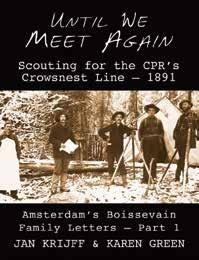
9781945509889

Madeline’s Good Dirt and Junk Collection by Madeline Berger (Cloudscape $20.00) is a celebration and reminder of the many things we often take for granted or don’t notice in our communities. Berger is a non-binary comic artist in Vancouver who finds inspiration in other artists, queer life and art culture.
9781927742211



Storyboard artist Colin Lorimer, born in Northern Ireland but now based in Vancouver, has released Daisy (Dark Horse $24.99), a modern horror graphic novel about a desperate mother whose search for her missing son leads to her encountering eight-foot-tall Daisy Phillips. 978150673-0011
OOutbreak Diaries by Jason Turner (Cloudscape $22) chronicles the dayto-day experiences of Vancouver-based Turner and his partner, Manien, who are both frontline workers, from March 2020 through to September 2021 during the COVID-19 pandemic. 9781927742495
Graphic novels tackling racism, identity, healing, queer coming-of-age, the fragility of life and moon creatures.
An almost painfully authentic evocation of a brief few years in Vancouver’s history, The Rooming House, a graphic novel by Michael Kluckner , covers the early 1970s when young wannabe members of what was then called the ‘Now Generation’ formed the city’s hip community centred around a few blocks of West Fourth Avenue. They lived in nearby communal houses and crash pads in Kitsilano’s many large old homes that had been converted into rooming houses for revenue because taxes were low and the properties weren’t worth developing. This may be hard to imagine for anyone born after 1980, but if you’re of an age to remember those times, The Rooming House is an excellent book to give to children (or grandchildren) who ask, “What was Vancouver like when you were my age?”



This is how it was. Vancouver was a haven for young Americans dodging conscription to fight an immoral war in Vietnam as the richest and most powerful nation on Earth expressed its frustration at being unable to defeat one of the smallest and poorest in a conflict that made no sense to anyone but ideologues. Anti-establishment activists held protests against the war, and free events called ‘Be-Ins’ and ‘Love-Ins’ where peace, love and ecological well-being were promoted. The Georgia Straight, founded in 1967 as an underground newspaper collective, advocated for environmental issues and legalization of drugs and against the bullying right-wing regime of Mayor ‘Tom Terrific’ Campbell, a real estate
developer on the make who described the Straight as “filth, peddled to school children.” New York’s Greenwich Village, San Francisco’s Haight-Asbury district and Toronto’s Yorkville were counter-culture meccas to which young hippies made pilgrimages, hitchhiking or driving old vans painted like “gypsy” wagons, criss-crossing North America in the steps of legendary 50s Beat Generation rebel writers Jack Kerouac, Neal Cassady and Ken Kesey
In economical compressed prose in the form of diary entries that are paired on each page with his illustrations, Kluckner zooms in on the adventures of four earnest young people, two men and two women, who typify the callow idealism of the time. He tracks the emotional consequences of their quests to find a meaningful alternative to becoming conformist ‘drones in the hive.’
They drift from Kitsilano communes to crappy jobs in small towns and back to Fourth Avenue to reconnect. There is drama—attending a peaceful ‘smokein’ in Gastown ends in beatings by riot police; tenants of the rooming house have to search for a dope stash left by a former dealer; and one rooming house resident has to be cool when encountering a naked housemate who has obviously spent the night with a guy she thought was her lover. And so it goes, very much as it did at the time.
An ensemble cast allows Kluckner to cover a lot of issues from different points of view at the risk of reducing the reader’s emotional investment in a particular protagonist, but that’s obviously the point. Long-running ensemble TV shows provide ‘drama without catharsis’ and in their nouveau roman novels of the 1950s, French authors Nathalie
Omichael kluckner’s success as an artist has tended to overshadow his parallel career as a journalist and writer-atlarge. In the 1980s, his books of paintings and illustrations, Vancouver The Way It Was, Victoria The Way It Was, Vanishing Vancouver, etc., were on everyone’s brass-and-glass coffee tables in living rooms where Kluckner prints shared the walls with Peter Margraf’s west coast serigraphs. Unlike most historical photographs, Kluckner’s paintings captured and celebrated the scruffy ambiance of Vancouver’s old houses and buildings, conveying the warmth of long human use the way an ancient cracked leather jacket or weather-battered hat comforts the soul.
His interest in Vancouver’s fragile neighbourhood architecture could hardly have been more timely. When he began publishing his books, Vancouver was entering the infamous Decade of Greed—city governments were pursing mega-projects and money-pit extravaganzas like Expo 86 at the expense of the modest human skyline Kluckner was trying to record and preserve.
In 1991, Kluckner became the first president of Heritage Vancouver, the beginning of a long public career as an advocate for the preservation of historic structures.
The sign of a real artist in any medium is that they’re always evolving, so it’s no surprise that in his 60s Michael Kluckner began combining his literary and illustrative skills in a series of graphic novels: Toshiko, Julia, 2050: A Post Apocalyptic Murder Mystery and now The Rooming House. At 71, he’s far from done.
9781988242460
John Moore drove a taxi in the early ’70s. His forthcoming book, The Last Reel, will be published by Ekstasis Editions.
Heritage activist Michael Kluckner’s graphic novel depicts Kitsilano at the height of its hippie period.The Rooming House: The West Coast in the Seventies by Michael Kluckner (Midtown Press/Sandhill $19.95) CAUTION: Reading The Rooming House may cause persons over 65 years to experience symptoms called ‘acid flashbacks.’ Don’t panic. Make them a cup of cocoa and listen to the tales of their wild youth before they nod out. Gastown Riot (top), Kitsilano (above left), protest (above right) by Michael Kluckner.

Until recently, Canadian laws criminalized LGBTQ+ people. This highly visual book presents the struggle for LGBTQ+ rights and the story of how Mounties, military and others fired by Ottawa for their sexual orientation got compensation and an apology.

Hardcover | $34.95



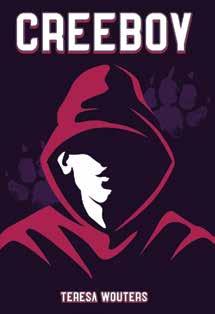





Based around the events of the Lytton wildfire, this novel for young readers is a climate change adventure story for our time.


Paperback | $14.95
“The finely detailed plot unwinds slowly, but make no mistake—it’s a page-turner.”
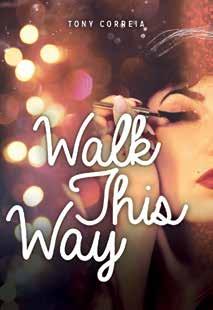
—
Paperback | $14.95
“…lighthearted energy and zinger lines create a sitcom-esque vibe where every character is a little larger than life.”
—






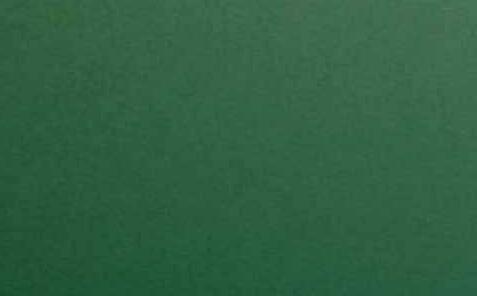

In the literary tradition of The Outsiders, a coming-of-age novel about teen boys and Indigenous gangs.
Paperback | $14.95
“…an important read for a better understanding of gang power and life in an Indigenous community plagued by poverty and a lack of opportunities.”
Corporations and their lobbyists have captured control of most Canadian regulatory bodies. How this happened is documented by field experts, insiders, academics and whistleblowers.


Paperback | $27.95
This classic book revealed the web of corporate ownership and land development in 1970s Vancouver – and readers 50 years later will see how the power of big property owners, major corporations and developers then continues today.


Paperback | $29.95
Revisionist






R. Pauwels challenges readers to reconsider what they know about key events in the last 250 years of world history.

Paperback | $27.95
“Groundbreaking, critical, well researched and readable books… which follows in the finest traditions of the works of Howard Zinn and Noam Chomsky”


 BY CARELLIN BROOKS
BY CARELLIN BROOKS
The word “elegiac” springs readily to mind when turning to Rhonda Batchelor ’s collection Allow Me It’s an overused word in poetry circles, sure, but in this case it really fits. The span of these poems, two decades’ worth, allows the writer to ruminate on subjects otherwise unlikely to be admitted in what were once known— but were they ever really?—as “polite circles.”

Sharply observed, wryly offered glimpses of a life lived are detailed here in the spare clarity that comes with hindsight. Mercilessly, yet softly, musings typically formed only in the privacy of one’s mind are laid out on the page. The pleasure and attendant terror of longed-for solitude after decades of caring for children and partners. How lost love is pined for and yet, in some disloyal yet necessary way, utterly unmissed. The consolations and dislocations of travel as outlined in the poem “In Transit,” including its triumphs, discoveries and finally bathetic humiliations: “our last meal / an overpriced vacuum-packed selection washed down / by a six-fifty glass of wine.” What memory does and doesn’t keep, and why. The doubtful consolations of age. All as compassed by the poet’s ever-fine eye.
Struggle, Books One to Six (Farrar, Straus and Giroux, 2010-2019), the ironically named, exhaustive six-volume chronicle of the writer’s quotidian wrestling with the particulars of his experience: his child’s stroller at the bottom of the stairs to their flat, the nursery school pickup, shopping for something to throw on the stove for tea, bedtime—a life so ordinary, so recognizable, that it assumes a kind of fierce urgency almost despite, if not because of, Knaussgard’s insistence on recording the most banal of details.
Batchelor’s work, distilled crystallike from her impressions of the world she both experiences and, sometimes, observes from afar, covers a similar span, in her case in miniature. These poems offer the reader the same sort of gathering force as would a more exhaustive chronicle.
Grief, certainly, even despair, forms the keynote in this collection: but also present is its attendant opposite. Hope emerges here, small and newly formed, yet with a fragility unsuited to the occasional brutishness of even the natural world:
For tender minutes the song reminds us that sorrows can be healed, before the telephone rings and the door is blown open by a merciless wind.
We’ve all been here. “(Love) Minus One” forces the grieving speaker out onto the streets for a “bracing walk” she doesn’t want. Well-meaning, unnamed others have assured her with “cheerful insistence / it will make a difference.” Except, of course, that it doesn’t. “I’m still one minus one; so much melted space / around a shape’s frozen smile.”
Very softly caught and held for examination, this bleak mood suffuses many of the poems in this collection.

It’s bearable, even welcome, because of the poet’s care with herself, the world and by extension those who encounter her words.
Batchelor has a way with last lines in particular. First ones, too: “I pine for the time / When I knew everything” begins her poem “Once,” expressing a sentiment that many readers will again, as at many points in this collection, find uneasily familiar.
The poet’s humanity, her willingness to suffer if suffering be necessary, is what binds these poems. A young man comes to her door asking for a donation for a worthy cause. Confessing to lack of funds, the speaker discovers that the canvasser too is just
scraping by; he hugs her—the “tight, quick embrace” emphasizing his lean youth—and goes.
There is fresh desire here, too, gently unfurling with the tenderness of potential lovers trying again after past failures. Although both agree that caution is warranted in “Slow,” Batchelor concludes this poem with the rueful and excited admission that the leaves glimpsed falling are “too fast to go slow.”
We turn these pages with almost a like urgency, because each life, including the one Batchelor chronicles here, is a cliffhanger with an ending we know, yet don’t. Batchelor’s work recalls Karl Ove Knaussgard ’s My


There are five sections in Allow Me, but the organization is loose. Batchelor tries different poetry forms and indulges herself in occasional wordplay, as in “At the Party for All the Capricorns”: “I stand on the cusp and reach for cake.” She even reproduces the misspelled phrasing of online personals in “Plenty of Fish,” which is—what else?—a found poem. These flashes of humour leaven Batchelor’s melancholy mood.
Toward the end of the book, the poem “Maybe He Loved the Wild Grasses” ends with a couplet that, one suspects, might describe the ‘I’ of these poems as Batchelor herself: “Modest and slender, they bow down /but only seem to succumb.” It could also be a fitting description of a collection that amply rewards rereading.
9781771714488
Carellin Brooks’ most recent poetry book is Learned (Book*hug, 2022), a chronicle in verse of the writer’s experiences at Oxford University and in the fleshpots of London.
A collection of poems spans two decades of grief leavened with humour and hope.


JOHN ARMSTRONG
It’s 1978 and a non–stop carnival of debauchery begins as the first shock of punk hits Vancouver. Now, in 2022, revisit John Armstrong’s pivotal memoir in a new 21st anniversary edition of Guilty of Everything.

NOV 2022 :: 978-1-55420-191-4

In 22 engaging essays, Summerland writer Don Gayton fuses the personal with the ecological to portray the geography and the natural and human history of his adopted Okanagan Valley homeland.

NOV 2022 :: 978-1-55420-194-5
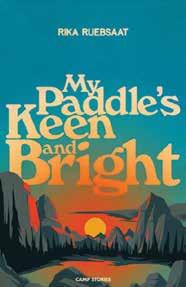
In My Paddle’s Keen and Bright, Rika Ruebsaat allows camp veterans of all ages and backgrounds to reflect on their experiences of summers spent away at camp, and the indelible lifelong impressions these have left on them.
FEB 2023 :: 978-1-55420-188-4


The hit song “Still This Love Goes On” by Buffy Sainte-Marie was inspired by the singer/songwriter’s attachment to her ancestral Cree homeland in Canada. “I wrote this song in a cabin in Alberta, in the wintertime,” she writes in a new children’s picture book of the same name.
“For me, it was like taking photos with my heart of the things that I see on the reserve. The geese, the ice, the snow, and the people are all there. But I was also thinking about how it is in the other seasons, when everything looks so different. The one thing that stays the same is my love for it all, day after day and year after year—especially the people and our Cree ways, precious like the fragrance of sweetgrass.”
Buffy Sainte-Marie was born on a Saskatchewan Cree reserve and adopted by American parents from Maine, where she was raised. She later recon-

nected with her Cree roots in Canada. Sainte-Marie’s most notable songs include “Universal Soldier,” “Until It’s Time for You to Go,” and “Now That the Buffalo’s Gone.” In 1983, she won an Academy Award for Best Original Song for “Up Where We Belong.”
Based on the song of the same name, which was released on the 2008 album Running for the Drum , Still This Love Goes On is illustrated by
Flett says that while working on the book, she listened to the song every day. “My son and I would hum and sing the lyrics throughout the day, just like all the important songs and music that hold meaning for us; it’s imprinted on us now for life.
“The lyrics represent a Cree worldview, one in which we don’t really have a word for goodbye, but say kîhtwâm ka-wâpamitonaw, which means ‘we’ll see each other again.’”
Still This Love Goes On was selected by The New York Times/New York Public Library as one of the Best Illustrated Children’s Books of 2022.

9781771648073
is power. The power of wildness is inefable, indomitable. It wants to escape an ultimate defnition. It wants to be something else, and then something more, and then something more. It is alive, powerful, and has a will of its own.”
From In the Name of Wild: One Family, Five Years, Ten Countries, and a New Vision of Wildness, by Phillip and April Vannini, with Autumn Vannini

Julie Flett illustrates Buffy Sainte-Marie’s song about a Canadian Cree reserve.Still This Love Goes On by Buffy Sainte-Marie, art by Julie Flett (Greystone Kids $22.95) Julie Flett (Cree-Métis), who has won two Governor General’s Awards, an American Indian Library Association Award, plus BC Book Prizes’ awards and nominations. tBuffy Sainte-Marie. Illustration (top) by Julie Flett, from Still This Loves Goes On
“Wildness




















ar into the future in a far-off galaxy, a cadre of hightech pirates— known as Star Eaters—rob energy sources from other planets in order to feed their fleet of roving starships and serve a hunger for corporate profits in Brooke Carter’s latest teen novel, Star Eaters, to be released in February 2023. The Star Eaters’ work often leads to the destruction of the planets they raid.
A new Star Eater, Destin, is soon reluctant to fulfill his job duties. On a solo mission with orders from his “owners,” the IRIS Corps, Destin is distracted by an illicit cache of books a previous pilot had left onboard. This discovery enriches his thoughts as he approaches a planet he must raid.
“What world, what kingdom, what shores? Words floated in his mind,” writes Carter. “They were bits and pieces of old books he’d read.”
The IRIS Corps, predictably, want their young Raiders to stick to training manuals and star maps and do not allow them to read “old books.” Even though this novel is set in the distant future, the fear of information from other sources and even ancient knowledge still lingers in the minds of those in power. They understand the power of words.
Destin thinks he’s lucky in this regard because he is a solo pilot and no one else, or so he thinks, can discover his contraband stash of books or prevent him from setting foot on another planet if his screen goes blank from time to time. So, he is lured by the green of the trees and the blue of real water and the warmth from the only small sun of this “pretty planet” orbit… the sun he is supposed to steal with his spacecraft’s energy catcher.
Destin loathes his job title—Raider —and he hesitates to follow this order because it will condemn a beautiful place to a sun-deprived death. But he is threatened by his Commander with the loss of his job and with being returned
to the massive, dismal orphanage for war orphans from whence he came. Could things get any worse? Why, yes, he has a stowaway on board from the very planet he has just raided! A young woman with golden eyes, desperate to save her home, slipped into his spacecraft while he was looking at the way sunlight danced on the leaves and water.
What teen reader today is not familiar with war after war in this world? Or of thousands of children being separated, forcibly in most cases, from
their parents and put into institutions to wait for adults to free them? Who has not heard of people desperately trying to save their own environment, whether a river valley, mountainside, prairie grassland, polluted lake or entire ocean. People being dehumanized is the age-old strategy of warmongers; and the destruction of other species and their habitats for the sake of profit continually haunt contemporary headlines.
Hence the high interest factor of this superbly written book for teens,





which pits Destin’s empathy for someone fiercely protective of her homeland against the insatiable need for energy by those in control who falsely declared her planet “uninhabited.” Now Destin is faced with the ultimate decision of his young life.
Carter’s novel is action-packed yet thoughtful, as it considers the ethics of blindly following orders and thereby causing mortal damage to other species and entire environments.
Ovictoria - based orca book publishers has had great success over the past two decades with a specialized series of books written for teens in the hi-lo (high interest, low vocabulary) category. Orca has attracted renowned writers in other genres to contribute to their trailblazing literacy lineup, such as Gail Anderson-Dargatz, Marty Chan, Carrie Mac, Mahtab Narsimham, Eric Walters and Pam Withers. Wilderness adventures, sports, LGBTQ+, romance, fantasy, horror and lots of mysteries pique the diverse reading interests of 12-to-16-year-olds as they strive to make sense of written English—and, bonus, some are translated to French as well.
Star Eaters is a novel written for what is likely the most challenging new series, Orca Anchor, developed for teens with a reading level below or at Grade 2. The publisher has integrated design and production features to make reading even more accessible: dyslexic-friendly fonts (typefaces), cream-coloured paper and a larger page size with wider margins (and thus, fewer words per line).

award - winning writer brooke carter has contributed a timely and thoughtful tale in this Orca Anchor series; a social and political allegory and a beautifully depicted budding romance amidst hellish life or death circumstances… at a Grade 2 vocabulary level. It is no small literary feat to investigate the possibilities for the human condition in the future, which any reader would find engaging and pertinent to Planet Earth.
9781459834675


Caroline Woodward wrote and illustrated a short story collection called Work is a 4-Letter Word for adult learners as part of a National Literacy project.

Victoria writer, poet and environmentalist Maleea Acker heeded the advice of an elder poet who told her that activities like walks in the woods, meditating on brackish pools, wandering streets—just getting out and taking it all in—was better research than chaining herself to a desk. In her third collection of poems, Hesitating Once to Feel Glory (Nightwood $19.95), Acker writes of going to buy tacos in Mexico, watching a waiter hand-feed pelicans with broken wings, cypresses bending in the wind, remembering a teacher with a doll collection, sex and love, and memory and melancholy. “Acker summons a sad, mysterious music,” says fellow poet Jan Zwicky of these new poems. “A book of mesmerizing lamentations, at once precise and surreal.” 9780889714144

Canada’s first professional hangman, John Robert Radclive (also known as Ratcliffe), was hired in 1892, two years after he emigrated from England. He proved to be a reluctant hangman and initially did the job to ensure that death came quickly to convicts sentenced to hang. But he also came to question the Canadian justice system and his role within it, as revealed in Julie Burtinshaw’s first creative non-fiction title, Hangman: The True Story of Canada’s First Official Executioner (Tidewater $22.95). A previous author of six young adult novels, Burtinshaw did extensive historical research, including poring over old newspaper accounts to trace the ambivalence of public attitudes toward capital punishment. Radclive is said to have died of alcohol-related illness in 1911 at the age of 55.
9781990160141
In a slim novel told in verse for young readers 12+, Sara Cassidy ’s Union (Orca $12.95) is the story of a teenage boy dealing with sexual abuse trauma. Tuck’s abuser is his mother’s ex-boyfriend. When someone calls the boyfriend Tuck’s ‘father’, he blows up: “Not my dad, I snarl/Right/your mom’s fling/that stayed/do you miss him?” Tuck self-harms as a way to deal with his inner pain: “I pour hot tea/on my wrist/to feel/relief/that will leave/a scar.” Tuck’s courage is evident when he organizes employees to join a union to improve working conditions at the fast food outlet where he works. He also starts a romance with a childhood friend, although he is conflicted by the shame he secretly carries: “if she loves me/she has to know me/but if she knows me/how can she love me.”
Without using direct language, Cassidy depicts the damage done by abusive adults but also the healing offered by others—from compassionate friends and work colleagues to professional caregivers. 9781459834477
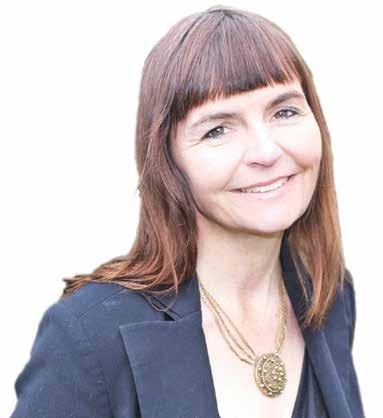
Fourteen-year-old Jack is happy to spend time with his friends in Lytton despite the hot dry summer of 2021. His sister is away planting trees, his dad is fighting wildfires up north, and his mother is visiting family in Victoria. The next-door neighbour, Glenda, drops by to check up on him. Then flames consume his home, and Jack barely gets out. This is the backdrop to the YA novel Escape from the Wildfire (James Lorimer $14.95) by Dorothy Bentley, based on the reallife facts of the wildfire that destroyed the town of Lytton. Also covered is the period after the disaster, as Jack and his family grapple with trauma and starting all over after losing everything. This page-turner lays out the consequences of climate change for middle school readers.

9781459417021
One of the first books to reveal the horrific abuses endured by Indigenous children at the former Kamloops Indian Residential School (KIRS) was Celia Haig-Brown’s Resistance and Renewal (Tillicum/Pulp Press, 1988, Arsenal Pulp, 2014), which contained interviews conducted with 13 former students. Now a follow-up co-authored by Nuu-chah-nulth Elder Randy Fred, Secwépemc poet Garry Gottfriedson, and Haig-Brown has been released, Tsqelmucwílc: The Kamloops Indian Residential School—Resistance and a Reckoning (Arsenal Pulp $22.95). This revised edition includes new text by Fred (who was himself a residential school survivor), Gottfriedson and Haig-Brown. There are also first-hand recollections from additional KIRS survivors and children of survivors. The book takes its title from the Secwépemc phrase “Tsqelmucwílc,” which loosely translates as “We return to being human.”

9781551529059

Known in Canada as an important roots musician and songwriter with an international following, David Essig began writing short stories based on the narratives of his songs four years ago. Now published in Fair Days (Peregrin $20), the thirteen stories tell the personal histories of Canadians from rural Ontario to small coastal villages in BC and New Brunswick. His stories are full of despair, punctuated periodically by hope. The book was initially released in a limited edition of 200 copies that included a CD of the music, and the album is available online for streaming and downloading at soundcloud.com/ David-essig.
9780992055714
In her first poetry collection in fourteen years, Accidents (Signature Editions $17.95), Italian-born Genni Gunn writes of life-altering upheavals that change people. The first section, “Absences” is about accidents of birth that define “why we are where we are.”
Gunn says her journeys back to Italy to explore her childhood have recalibrated her perspective through the lens of absence and time. The second section, “Artifacts,” is an exploration of the childhood objects we cling to. The final section, “Accidents,” considers the coincidences and mischances that lead to family strife, love and desire, and unrest and unease. Gunn previously published three novels, three short story collections and two other poetry volumes. 9781773240985
In Pauline Holdstock’s ninth novel, Confessions with Keith (Biblioasis $22.95), Vita, a mother and writer, goes through a mid-life crisis at the same time as her husband, as told through her journal. Holdstock says that the story has its roots in her own life. “I did actually keep a journal through some of the rocky years of raising a family and this voice began to creep in,” says Holdstock. “It was Vita’s voice, this sort of pretense of being in control. Rather than sitting down at a desk to open a journal and bursting into tears, which I could have done at times, I had this persona of Vita who would look at things as if it was all perfectly manageable.” 9781771964975







Ian Gibbs ’s third collection of ghost stories, Vancouver’s Most Haunted: Supernatural Encounters in BC’s Terminal City (TouchWood $20) finds him prowling Waterfront Station, the Orpheum Theatre, Gastown, Grouse Mountain, and West Van in search of the paranormal. Readers will be creeped out by the footsteps at the Irish Heather, the haunted washrooms at the Alibi Room, ghostly pranksters at Hycroft Manor, and the spirits in the abandoned tunnels at Riverview. Ian Gibbs lives in Victoria—arguably one of the most haunted places in Canada— and is the creator and host of the podcast Ghosts ’N Bears. 9781771513180
Statistics Canada reports that youth aged 12–17 spend an average of four hours per day on screen time, including TV, computers and video games. It is not good for their overall health nor development of their senses. Adults may be in even more dire straits as some studies show the average Canadian with up to 11 hours of screen time. The Book of Nature Connection: 70 Sensory Activities for All Ages (New Society $24.99) by Jacob Rodenburg may provide an antidote with its many ways to reconnect with the outdoors and nature (and unplug from screens). From camouflage games to scent scavenger hunts, this book presents “sensory activities” for all ages that “promote mindfulness and nature connection,” according to the publisher. A good way to get in touch with your inner tree hugger (note: the book contains tree hugging exercises).
9780865719712

Victoria’s funny man Jack Knox has released his fourth collection of stories about the absurdities of island living, Fortune Knox Once: More Musings from the Edge (Heritage House $22.95), based on the humour columns he wrote for the Times Colonist newspaper for more than 25 years. Two of Knox’s previous titles were longlisted for the Stephen Leacock Medal for Humour. Clearly Knox can write laughout-loud stories. Fellow writer Susan Lundy advises Knox readers to be prepared for sudden “spit-your-coffeeout” snorts of laughter. Knox’s material covers the sexiness of the Canadian accent, the lost art of handwriting, the Rogue Cow of Metchosin and ugly trucks, and includes a parody of endof-school announcements and a letter to Prince Harry 9781772034172

In 1996, Christopher T. Brayshaw published Plant Collecting for the Amateur (Royal BC Museum). Now a successor has emerged in Pressed Plants: Making a Herbarium (RBCM $19.95) by Linda P.J. Lipsen, with illustrations by Derek Tan. The book includes approaches to plant collection, practical advice and the latest updates to best practices for recent issues—such as navigating complex cultural and conservation considerations. Linda Lipsen is the collections curator at UBC’s Herbarium, Beaty Biodiversity Museum. Derek Tan is the digital producer at the Beaty Biodiversity Museum and won the 2019 Governor General’s Award for Excellence in Museums. 9780772680563
EVENT celebrates 50 years of publication with a Notes on Writing anthology, featuring more than 70 personal essays with insights into the joys and struggles of the writer’s life and process, written by notable Canadian writers, including Jane Urquhart, David Bergen, André Alexis, Madeleine Thien, Eden Robinson, Jen Sookfong Lee, Zoe Whittall, Joy Kogawa, Souvankham Thammavongsa, Joshua Whitehead, and many others.




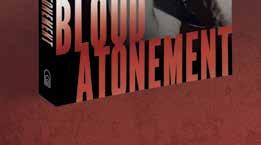





Melia McClure’s second novel, All the World’s a Wonder (Radiant $25), tells of three people who intersect through their vulnerabilities: a playwright possessed by her muses; an actress desperate to succeed; and a doctor haunted by a lost love. The three people cross time and space to meet through the playwright’s bizarre creative process: the playwright must become her characters; the actress must speak from the grave to tell her tragic story; and, to heal his harrowing past, the doctor must surrender to his patient— the playwright. Melia McClure’s debut novel was The Delphi Room (ChiZine, 2013). She is also a performer for stage and screen. 9781989274798
was shortlisted for this year’s Ethel Wilson Fiction Prize for her collection of thirteen short stories, We Want What We Want (House of Anansi $22.95).
The collection won the Lambda Literary Award for bisexual fiction. The book title comes from the story The Brooks Brothers Guru, when a man muses, “ Schopenhauer knew that human desire caused pain and difficulty in the world, but our will is intractable. We want what we want. So what do we do about this? How do we find relief?”
When Randy Nelson retired in 2012 as the most decorated fishery officer in the history of BC, he began collecting poaching stories. Such as the one about the ex-RCMP officer who made millions of dollars selling illegal narwal tusks until he was caught, fined, and jailed in the US. Nelson’s nickname for him was Lowlife. “I don’t much care for poachers,” Nelson says. “But a few changed and I liked them after that.” He gathered almost a hundred stories about poachers getting caught in both Canada and the US in The Wildest Hunt: True Stories of Game Wardens and Poachers (Harbour $24.95), Nelson’s first book was the memoir Poachers, Polluters and Politics: A Fishery Officer’s Career (Harbour, 2014).

9781550179989
Ohlin teaches at the UBC School of Creative Writing. 9781487004897




In 1956, the Canadian Government declared the Snayackstx (Sinixt) extinct. Historically, this First Nation’s traditional lands covered the upper Columbia River region in BC and the US. Thus, with the stroke of a pen, the Sinixt were no longer
allowed to access 80 percent of their homeland. That changed on April 23, 2021, when the Supreme Court of Canada held that the Sinixt are an Aboriginal People of Canada. Eileen Delehanty Pearkes covers the tragic story of the Sinixt in Canada in The Geography of Memory: Reclaiming the Cultural, Natural and Spiritual History of the Snayackstx (Sinixt) First People (RMB $30).
“Boundaries are dissolving on a global scale,” she writes. “The people are coming home.” 9781771605212
funded by the late Gloria Vanderbilt and published in the anthology, CVC9 - Carter V Cooper Short Fiction Anthology: Book Nine (Exile $22.95). It was also the title story in Quednau’s short story collection published by Nightwood in 2021. 9781550969139

When a little girl, Flippa, learns her beloved grandmother is going to die in a week, she carefully counts down the last hours and minutes in Bill Richardson ’s Last Week (Groundwood $14.99), for young people aged 9–12.
Flippa knows when her “gran” will die because she has opted for medical assistance in dying (MAiD). Illustrated in black and white by Emilie Leduc—with one unexpectedly joyful splash of colour—Last Week examines what death with dignity can mean to a whole family, with an afterword and additional resources by MAiD expert Dr. Stefanie Green 9781773065663
Toronto-born Marion Quednau raised her daughter in Mission before moving to the Sunshine Coast. It’s where she wrote her short story “Sunday Drive to Gun Club Road” about a family that takes car outings when owning a car was still a big deal, and gas and real estate were cheap. The family starts going to open houses, not to buy but as a voyeur’s treat. Of course, the story is more about family dynamics than buying property. It has been shortlisted for a Carter V. Cooper Short Fiction Award,

Dr. Samuel LeBaron has spent more than thirty years working with children and adults dying from cancer. In his memoir, Ordinary Deaths: Stories from Memory (U. of Alberta Press $26.99), LeBaron reveals his time of vital, intimate connection with others during his employment at a morgue during medical school, his early years as a clinical psychologist, and later careers in primary care and hospice. He wrote the memoir while facing his own terminal illness from Stage IV lung cancer. LeBaron is professor emeritus of medicine at the Stanford University Medical Center and splits his time between Victoria and San Francisco. 9781772126563

Rescue Me: Behind the Scenes of Search and Rescue by Cathalynn Labonté-Smith (Caitlin $26)
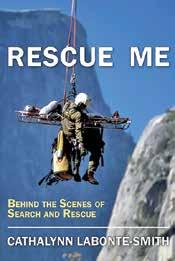
The Sacred Balance: Rediscovering Our Place in Nature by David Suzuki (Greystone $24.95)
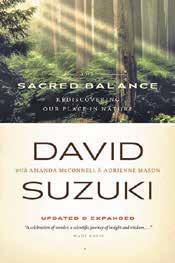
25th Anniversary Edition.
David Suzuki will soon be leaving as host of the long-running TV show, The Nature of Things Now his 1997 book, The Sacred Balance, has been released in a special 25th anniversary edition. His dire warnings about people’s damaging impact on the natural world and pleas to slow down and start respecting all living things, are more relevant than ever.
Having shaken up federal politics when she went from being a senior cabinet minister in Justin Trudeau’s Liberal government to becoming an independent Member of Parliament, Indigenous leader Jody Wilson-Raybould has published a collection of her speeches and lectures from the past ten years. She is forthright in her analysis of Canada’s colonial past and her desire for a new era of recognition and reconciliation.
Whether adventuring in deserts or woods, mountains or swamps—whatever the locale —there’s likely a Search and Rescue team nearby, ready to help if called upon. What SAR units accomplish is often hair raising but so too is what survivors endure as told in LabontéSmith’s collection of easy-toread stories that, she says, “will leave you shaken and in awe of people’s will to survive.”
Sockeye Silver, Saltchuck Blue by Roy Henry Vickers & Robert Budd (Harbour $9.95)
With catchy rhymes married to Roy Henry Vickers signature artwork, this children’s board book is the third instalment in a series that started with Humpback! One Eagle Soaring The concepts of colours are linked to the changing seasons on the West Coast: red tones of huck leberries in summer, silver and red flashes of spawning salmon in fall, grey rain in winter, and the sprouting of green in spring.

A Time of Light and Shadow: To Asia, Africa, and the Long Way Home by Ella Harvey (RMB $28)

A young woman in 1975, Ella Harvey travelled and worked as a nurse in countries ravaged by war and poverty; places like Lebanon, Turkey, India, Cambodia and Djibouti, Africa. At times, she was shattered by the immense suffering she encountered. As an older woman, Harvey returned to India to reflect on her experiences and wrote about it in this travel memoir.
The Survival Guide to British Columbia by Ian Ferguson (Heritage House $19.95)
Born and raised in Pakistani Punjab, Vancouver-based Tāriq Malik lived for 20 years in Kuwait prior to immigrating to Canada in 1995. Following a book of short stories and one novel, Malik has published his debut collection of poems, Exit Wounds (Caitlin $20), covering the impact of his migrations and life experiences—from the partition of India in 1947 to the Iraq-Kuwait war and, finally, Canada. His poetics are gleaned from the various cultures he has physically inhabited, he says, but a central theme is “the search for home, both in the spatial and temporal sense.” 9781773861005

As in, Under the Swastika in Nazi Germany (Bloomsbury $27.95) by Kristin Semmens, who tells of five different perspectives of life in Hitler ’s Third Reich (1933–1945). She includes insiders and outsiders—accomplices, supporters, racial and social outsiders and resisters—that capture the complexity of Germans’ lives under Hitler. The stories emerged from recent research and the voices of those who often remain silent in histories of this period. The book also contains images, some familiar, others rarely seen. Semmens is an associate professor of history at UVic. 9781350142794
lisher writes. Yet White recognizes the problem of being born into the world “looking outwards and seeing others.” “They become them,” he notes in his introduction. That separation continues to grow, but every time we feel compassion, empathy, pity or share with others, “we are recognizing the truth, which is that there is no them,” he concludes. Calvin White lives in Salmon Arm. 9781989689424
Gitxsan member Hetxw’ms Gyetxw, also known as Brett D. Huson, has published the sixth title in his awardwinning series Mothers of Xsan. The Raven Mother (Highwater $24.95) follows Nox Gaak (the mother) as she and her flock teach her chicks how to survive. Ravens have many roles, both for the land (being important to their ecosystem) and in Gitxan story and song, which Huson describes for readers in grades 5–7, although the books can be used for younger children too. Huson has worked in film and television, specializing in connecting science and Indigenous knowledges. Artwork by Natasha Donovan 9781774920039

Victoria is an unhappily married woman burying her melancholy in books and daydreaming in Robin Yeatman’s debut novel, Bookworm (Harper Perennial $21), about obsession. One day, in Victoria’s favourite café, she notices a handsome man with the same book she is reading. She fantasizes that this stranger must be her soulmate. Remembering she is married, Victoria’s mind retreats to darker places and ways of getting rid of her “dreaded husband” for “café man.” Will Victoria get what she’s wished for? Vancouver-based Yeatman composed her first novel at the age of twelve. Bookworm will be released on Valentine’s Day in 2023. 9780063273009
Working in forestry and living in the small town of Merville on Vancouver Island, Harold Macy writes stories about the particular magic of the West Coast: everyday fishermen and loggers, gardeners and wildland firefighters, rock blasters and island homesteaders. But firstgrowth fallen trees and the brassy orchestra of trumpeter swans play just as big a role in his latest collection.
Poet Carla Funk grew up in a Mennonite community in Vanderhoof. After publishing five books of poetry, this is her first memoir, a paean to childhood and rural life in British Columbia. Paying tributes to both her church-going mother and her truck-driving father, she uses rich language to create the world that shaped her as a person and writer.


Having moved to B.C., humorist Ian Ferguson finds the place pretty – but also pretty scary. Here’s his guide on surviving everything from the province’s politics, the locals and the weather, to our food and fashion sense. Some ‘Fergusonian’ wisdom: B.C. is located – “to the left of Alberta”; speaking to B.C.’ers, means “not saying anything beyond, ‘I love trees’ and ‘forgive me’; and, you can “tell an outsider (filled with enthusi asm and interest) from a local (full of resentment and ennui).”

Vince R. Ditrich ’s first novel , The Liquor Vicar (Dundurn, 2021), introduced failed musician Tony Vicar who is suddenly rocketed to fame in the small town of Tyee Lagoon (said to be based on Nanoose Bay). In the sequel, The Vicar’s Knickers (Dundurn $19.99), Tony Vicar is still famous. He still lives in Tyee Lagoon. His girlfriend, Jacquie O, is still with him. Only now, Tony has turned his attention to renovating an old hotel and converting the shabby beer parlour into a lavish pub, which he plans to name the Vicar’s Knickers, but there are many unforeseen challenges. Ditrich is the semi-retired drummer and manager of the band Spirit of the West. He lives on Vancouver Island. 9781459747289
Calvin White’s fourth collection of poetry, Facing the Sweating Horse (Now Or Never $19.95), embraces all life and matter—humans, fellow species, rocks and water, the air and light. “All that graces our finate days,” his pub -
In seeking to answer Pontius Pilate’s trolling question, “What is truth?” Jennifer Zilm turns to a variety of sources and discourses in her poetry collection First-Time Listener (Guernica $20). Her replies are inspired by (but never limited to) God, Gilgamesh, CNN, the Cloud, the Bible, hypochondriac hay fever sufferers, Bob Dylan, YouTube conspiracy tutorials, Proust, marginally housed meth heads, Benjamin Moore paint swatches, Tarot cards, Ancestry.com as well as her own memories and senses. Zilm splits her time between Surrey and Ecuador. She has a BA and MA in Religious Studies from UBC. 9781771837460






Tom Wayman played a major part in my life. Back in the days when Macmillan of Canada was a major Canadian publisher, with a kid named Doug Gibson learning about books by having fun publishing them, we brought out Tom’s poetry book in 1974, called For And Against The Moon: Blues, Yells, And Chuckles. Three years later we published an even more distinctive book by Tom. The title was Free Time: Industrial Poems by Tom Wayman. To stress the importance of his theme, Tom persuaded us to take the cover photo for his book in our warehouse, with the staff gathered around, grinning in delight at Tom. I still peek at that remarkable cover as my 13 colleagues from those days pass away. It’s wonderful to see my old friend deservedly win the Woodcock Award.
Doug Gibson TorontoI met Tom Wayman through a Creative Writing course at Okanagan College in the 70s. Through him, I was introduced to some of our most notable BC writers and publishers of the time. And what a time it was in those earlier days! I’ve long been a fan of Tom’s poetry and have always admired him so very much. This is well deserved recognition—congratulations, Tom!
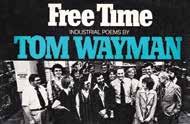 Nancy Wise Kelowna
Nancy Wise Kelowna
I’m so thrilled to see Not on My Watch has received this year’s George Ryga Award for Social Awareness in Literature. Alexandra Morton’s 20+ year struggle with the fish farm industry and the business-as-usual BC governments (all of them), for ecological common sense, for common decency, and for our salmon relatives themselves has been one of the great BC ecology battles of this century. The destruction of their habitat, from spawning streams to the fish farm fiasco, is one of the great crimes of this century, and Ms. Morton’s vigilance is one of our great stories of citizen action.
Rex Weyler Cortes IslandOI am elated to see Alexandra Morton, a hero among those fighting to protect natural environments, receive the Ryga award for her book, Not on My Watch. Her battle to protect BC’s wild salmon is an inspiration for all Canadians to speak up for the ecosystems around us. This recognition is well deserved and a long time coming.

Natalie Virginia Lang Abbotsford

Send letters or emails to: BC BookWorld, P.O. Box 93536, Vancouver, B.C. V6E 4L7 bookworld@telus.net

Letters may be edited for clarity & length.

Established in 1971, UBC Press produced just seven books in its first year of operation. Now it regularly publishes 65 to 70 new books per year and currently has over 900 titles in print. UBC Press is known for its social science books but also has two imprints—On Point Press and Purich—that publish topics covering Indigenous studies and law, and Western Canadian issues. Due to COVID-19 restrictions, anniversary celebrations were held in UBC Press’ 51st year.
Named for the Greek word meaning “to stand outside oneself,” Ekstasis Editions has mostly stood outside the mainstream, focusing on poetry books, starting in 1982 with publisher Richard Olafson’s collection, Blood of the Moon. In 1986, Olafson’s wife and a writer herself, Carol Ann Sokoloff joined to co-manage the press. In recent years Ekstasis has diversified into literary fiction, metaphysics and books on theatre. They also produce kidlit and YA books under the Cherubim Books imprint. To date Ekstasis has published over 350 titles.
UBC historical geographer Cole Harris, who wrote extensively about European settlement in Canada and colonialism’s impact on Indigenous peoples, died, aged 86. Harris spent eight years editing his award-winning classic, Historical Atlas of Canada, Vol. I: From the Beginning to 1800 (UTP, 1987). In 2003, Harris was nominated for the Hubert Evans Non-Fiction Prize for Making Native Space: Colonialism, Resistance, and Reserves in British Columbia (UBC Press, 2002). In 2018, he wrote Ranch in the Slocan: A Biography of a Kootenay Farm, 1896-2017 (Harbour) about the transformation of his grandfather, Joseph Colebrook Harris, from an upper-middle class gentleman to a socialist-leaning Slocan Valley rancher.

Rebecca Godfrey conducted over 300 interviews for Under the Bridge: The True Story of the Murder of Reena Virk (HarperCollins, 2005). It received the BC Award for Canadian Non-Fiction in 2006. Godfrey’s debut novel, The Torn Skirt (HarperFlamingo, 2001), about a teenager in the Victoria underworld was a finalist for the Ethel Wilson Fiction Prize. She was the daughter of David Godfrey, co-founder of House of Anansi Press, and mystery writer Ellen Godfrey. She moved to Victoria, age nine, when her father took over UVic’s creative writing department, and she left for New York as an adult. Her book The Dilettante, about Peggy Guggenheim, is forthcoming from Knopf.













